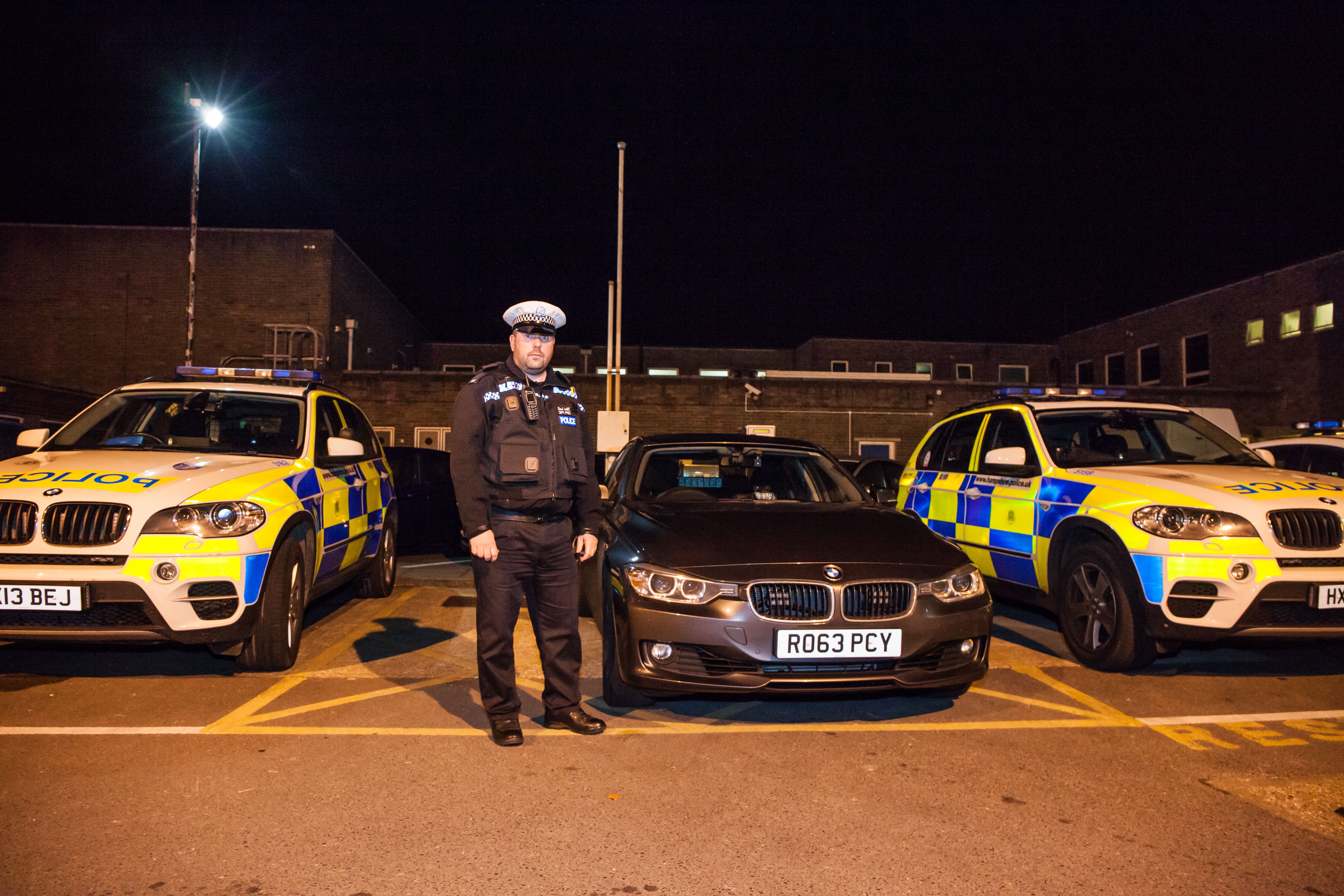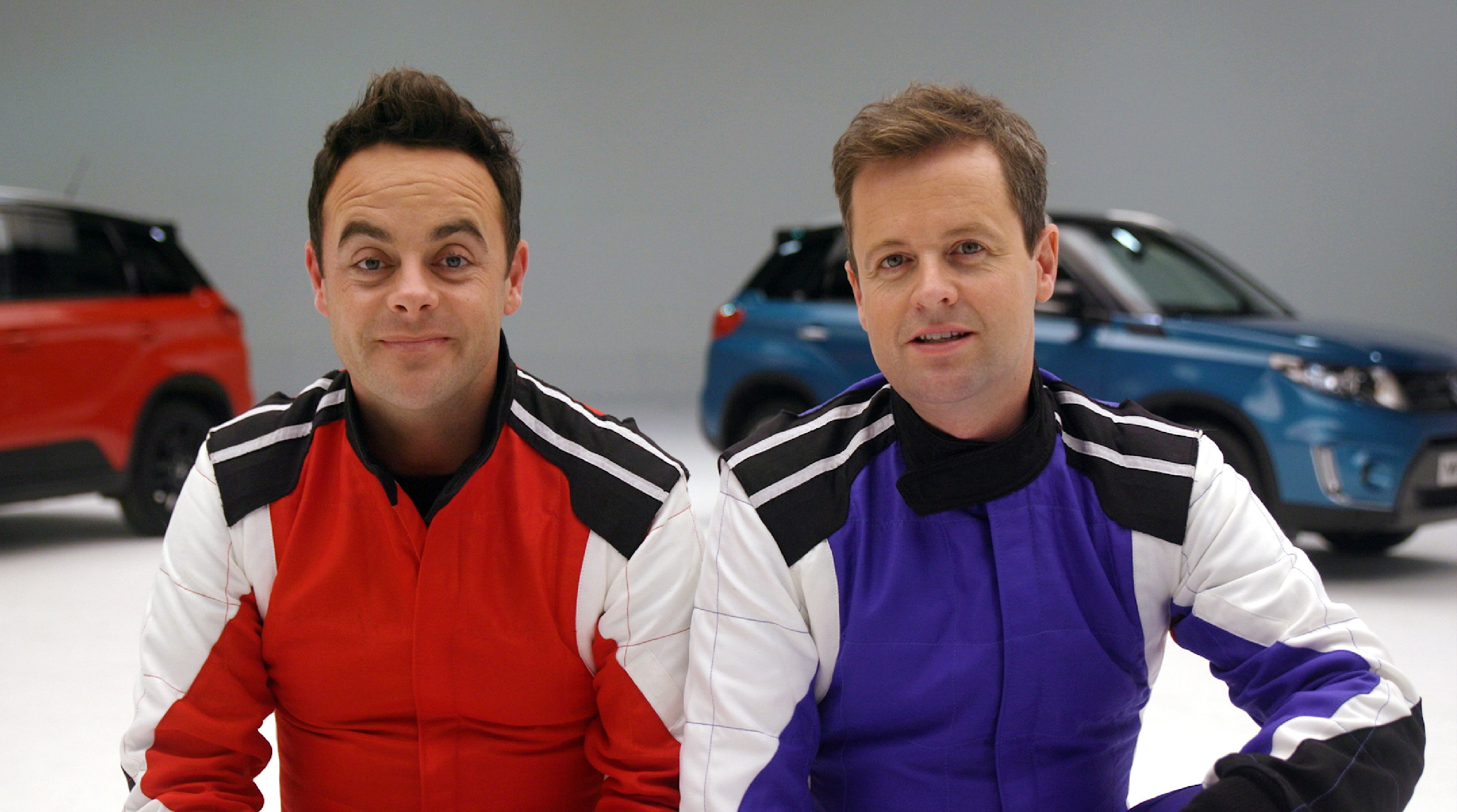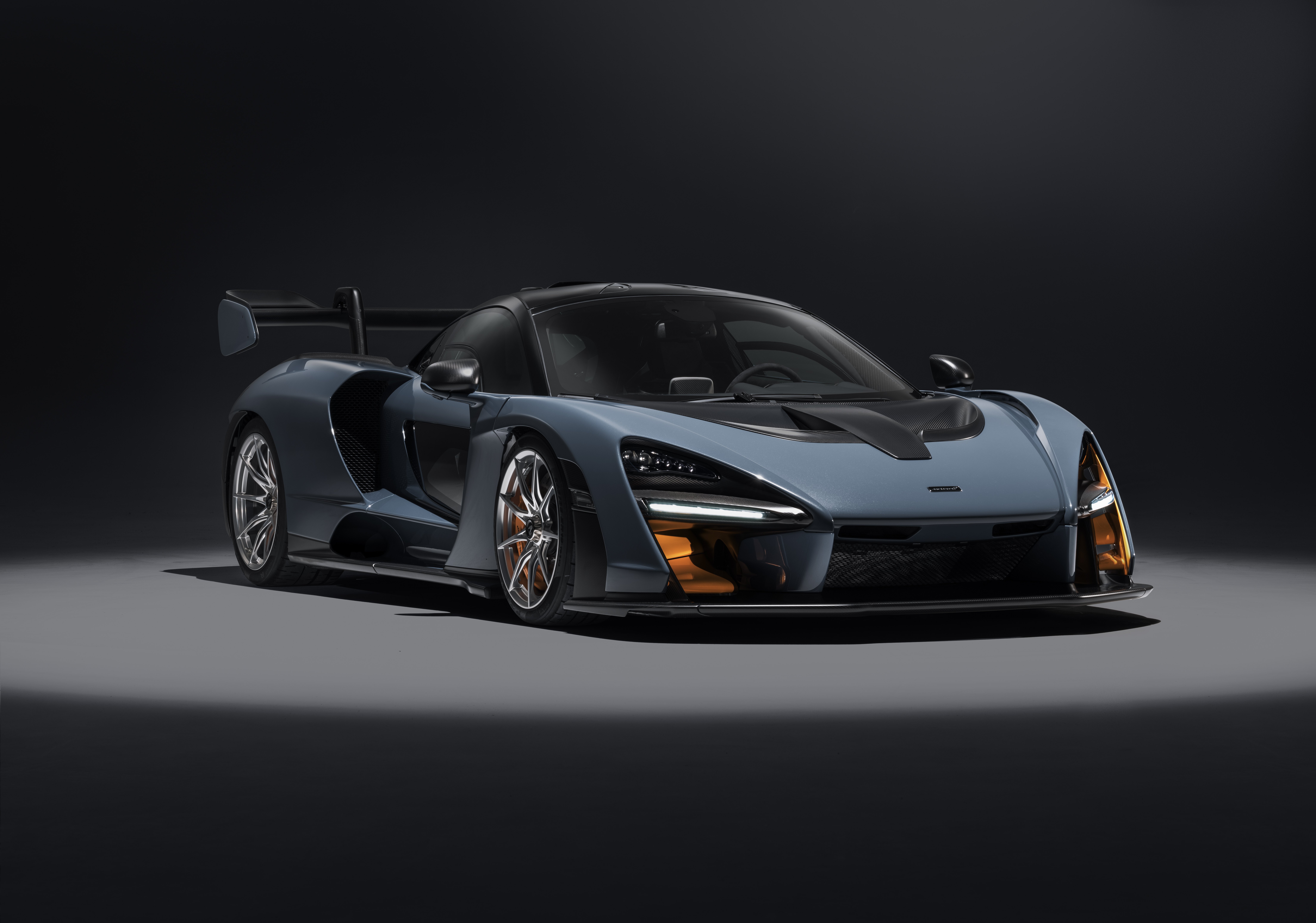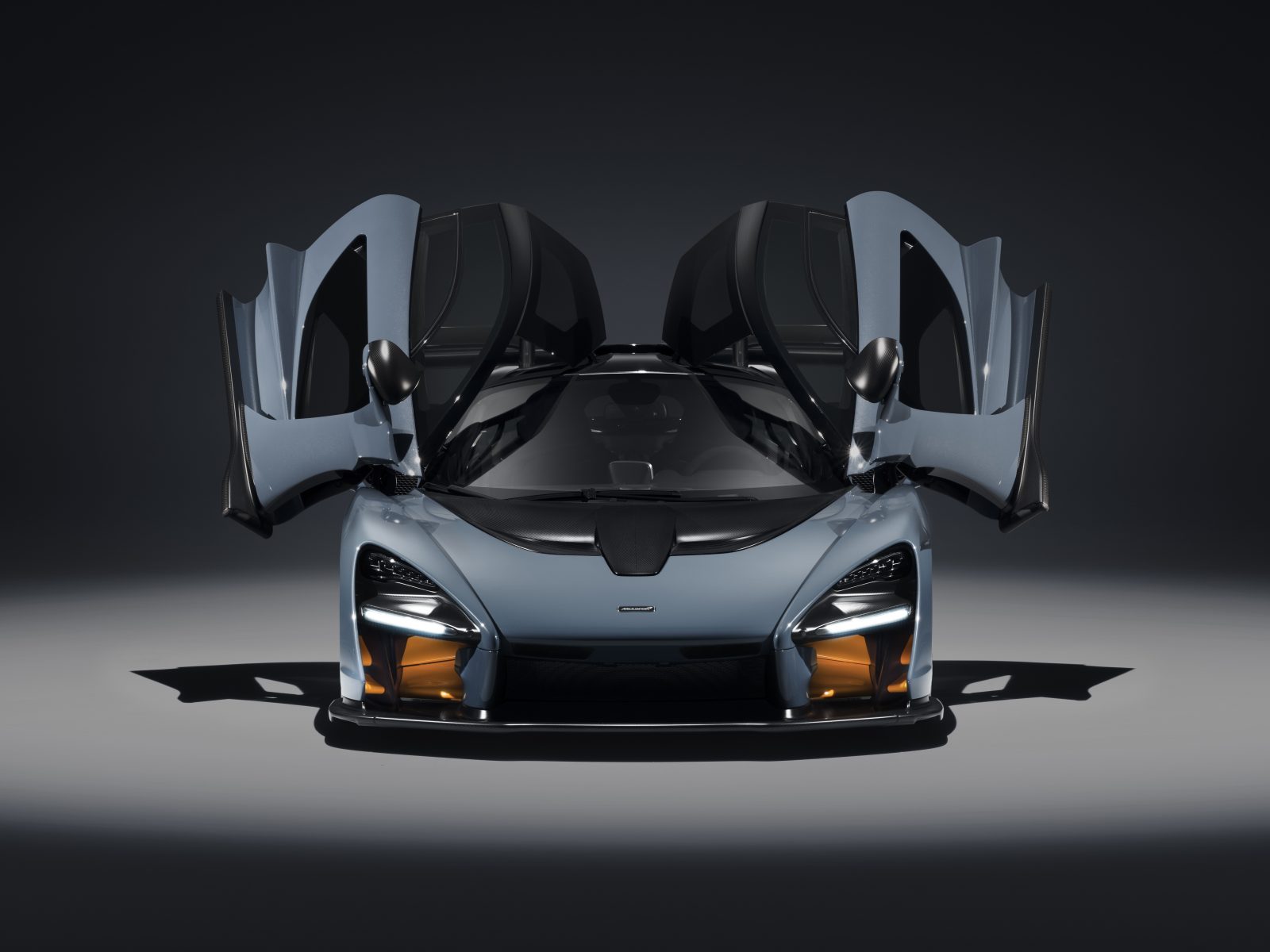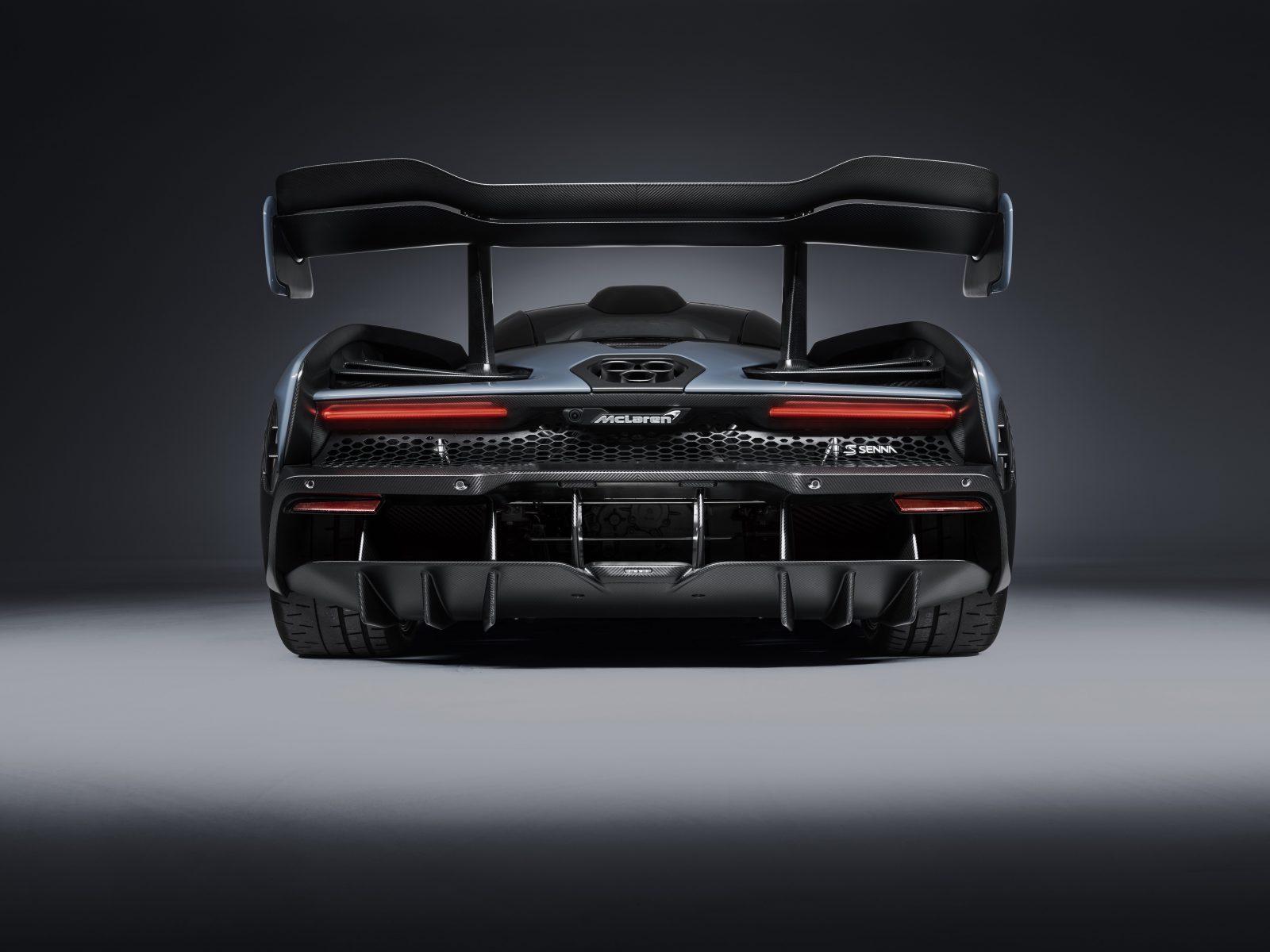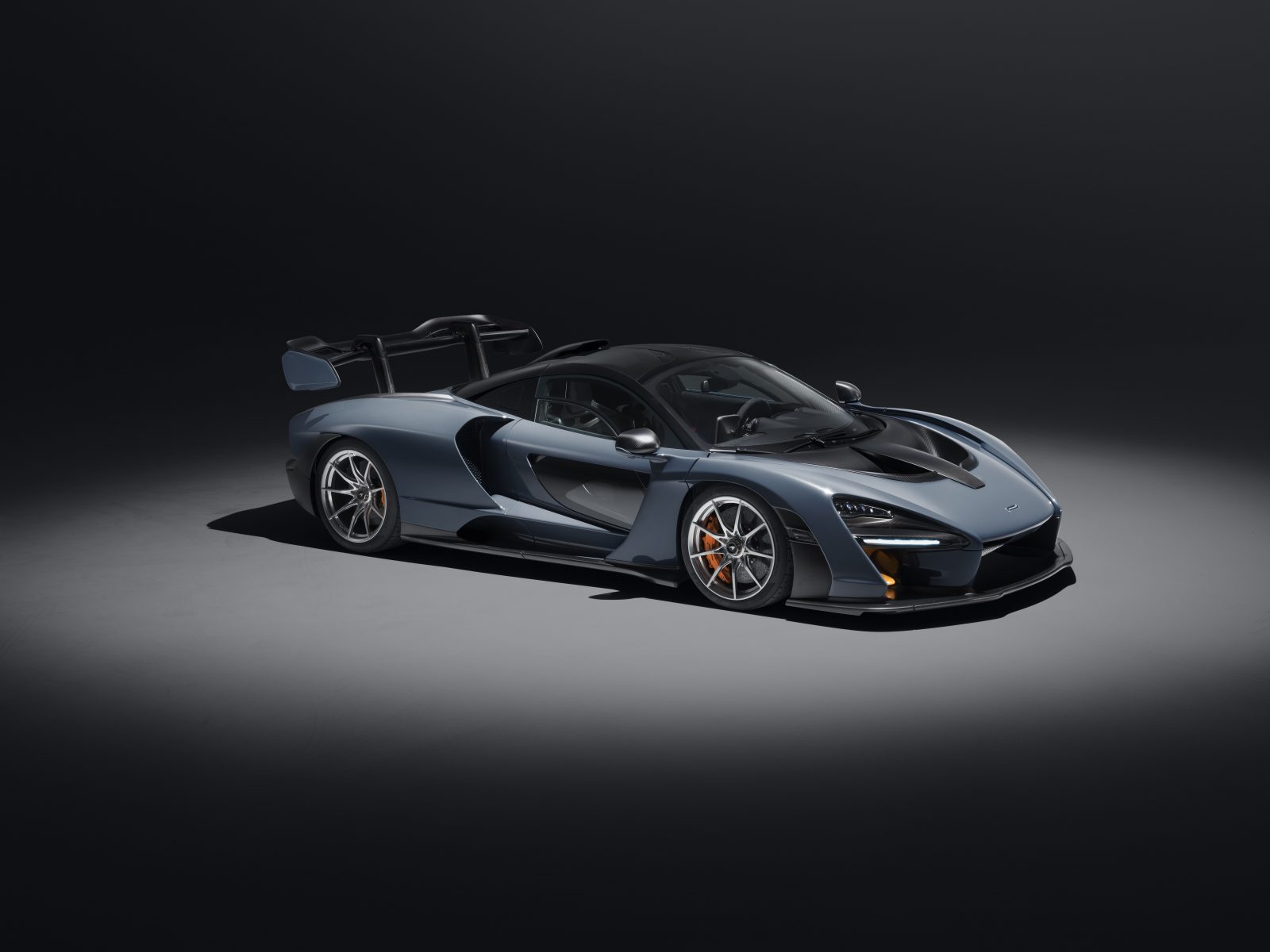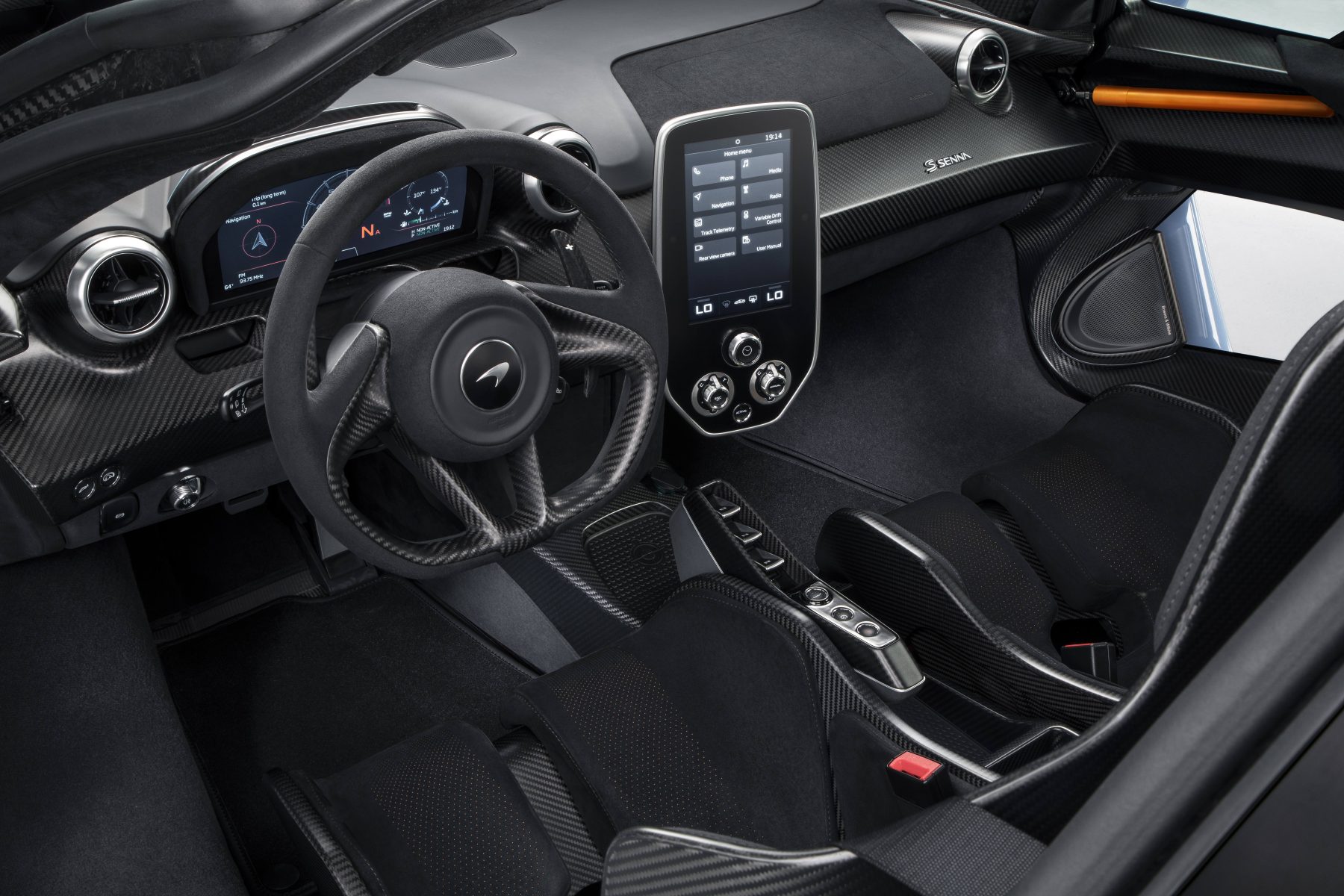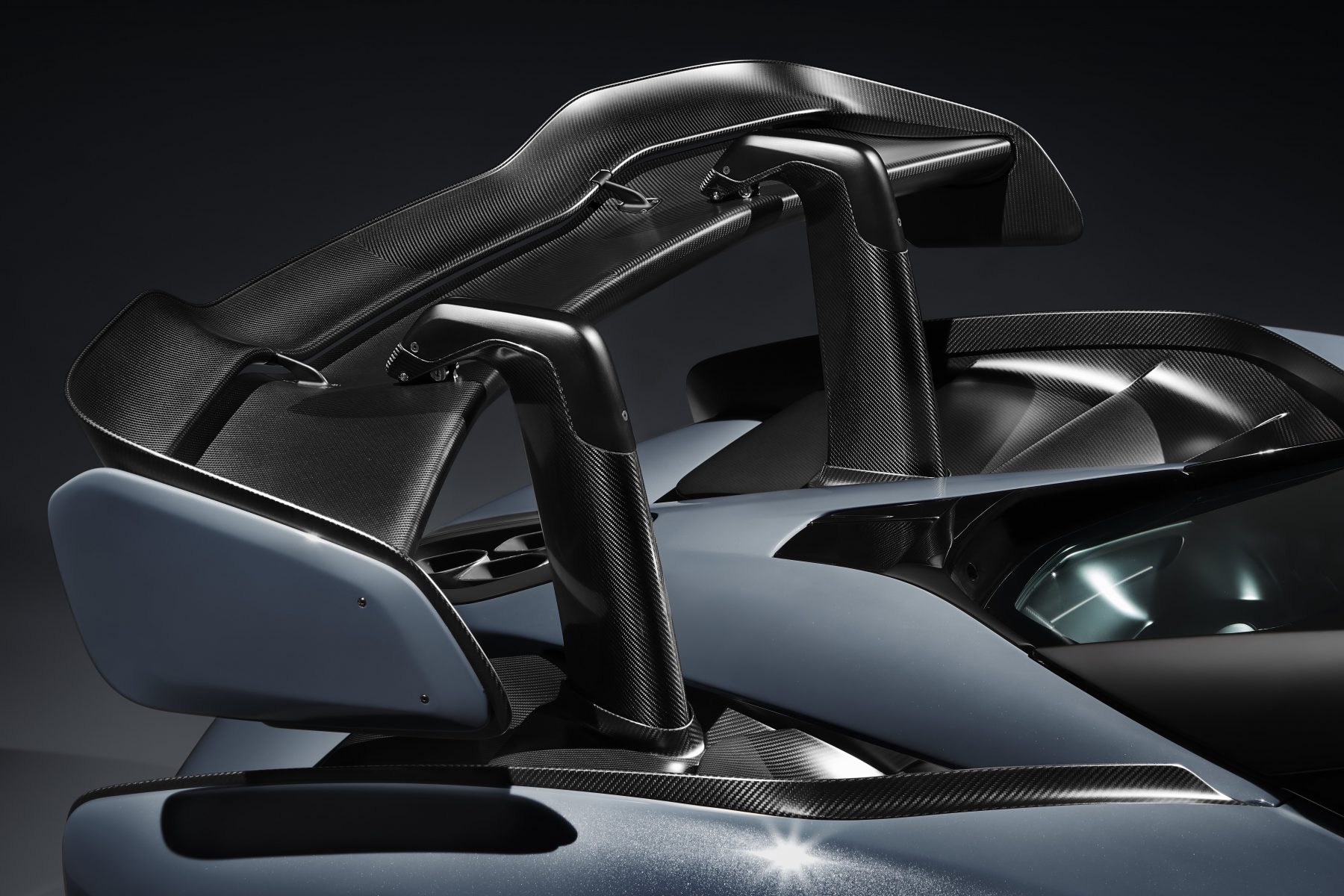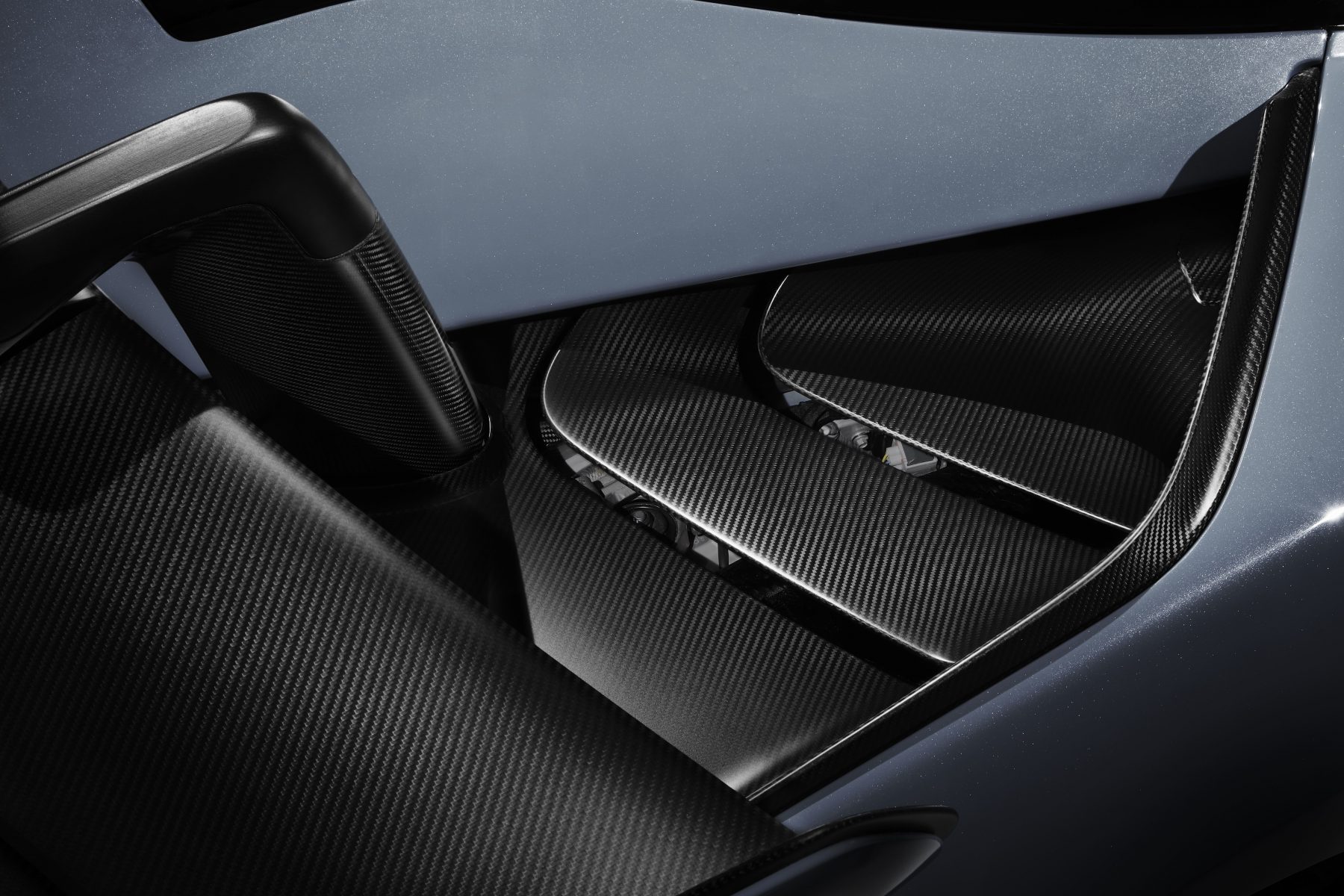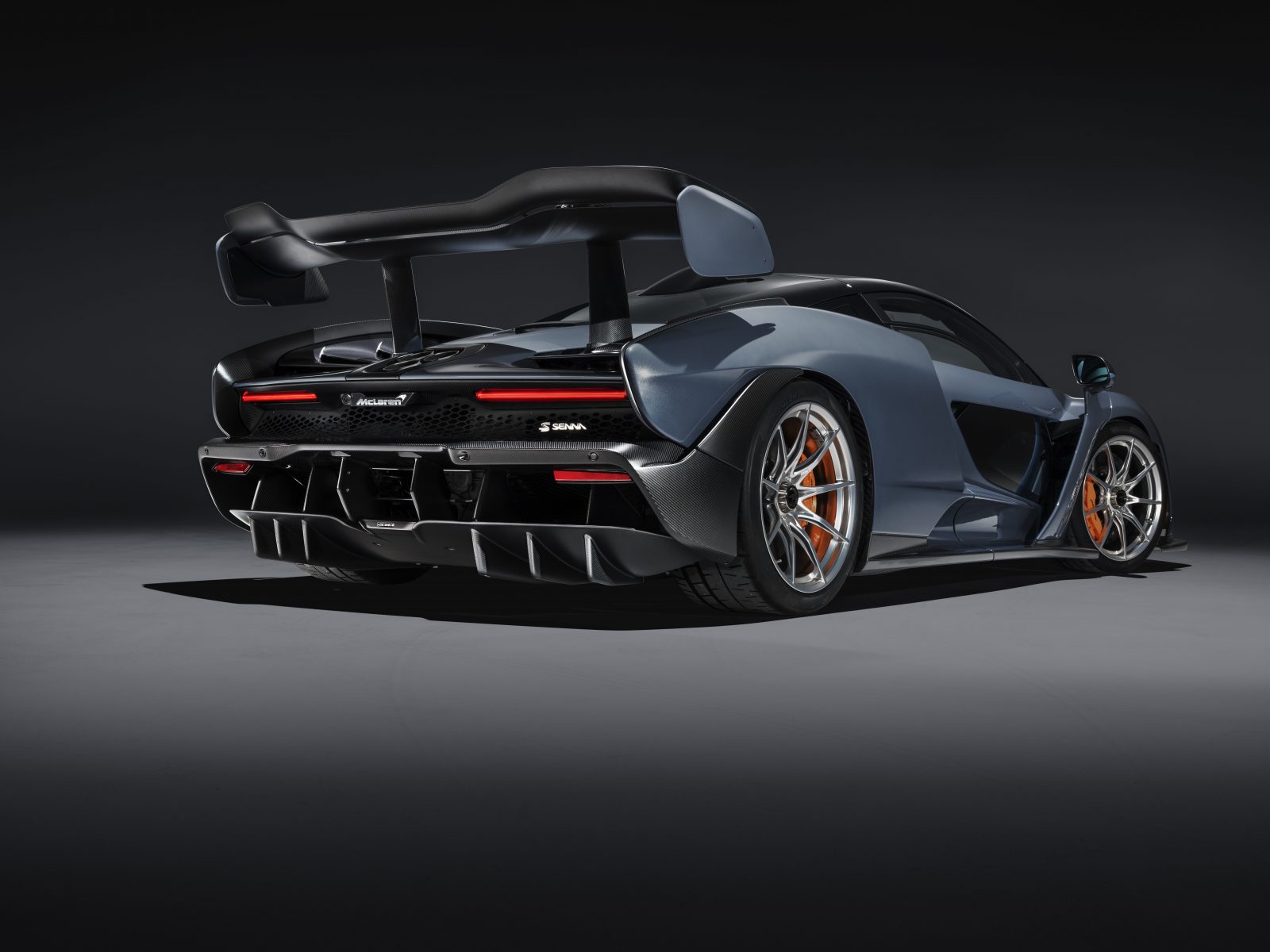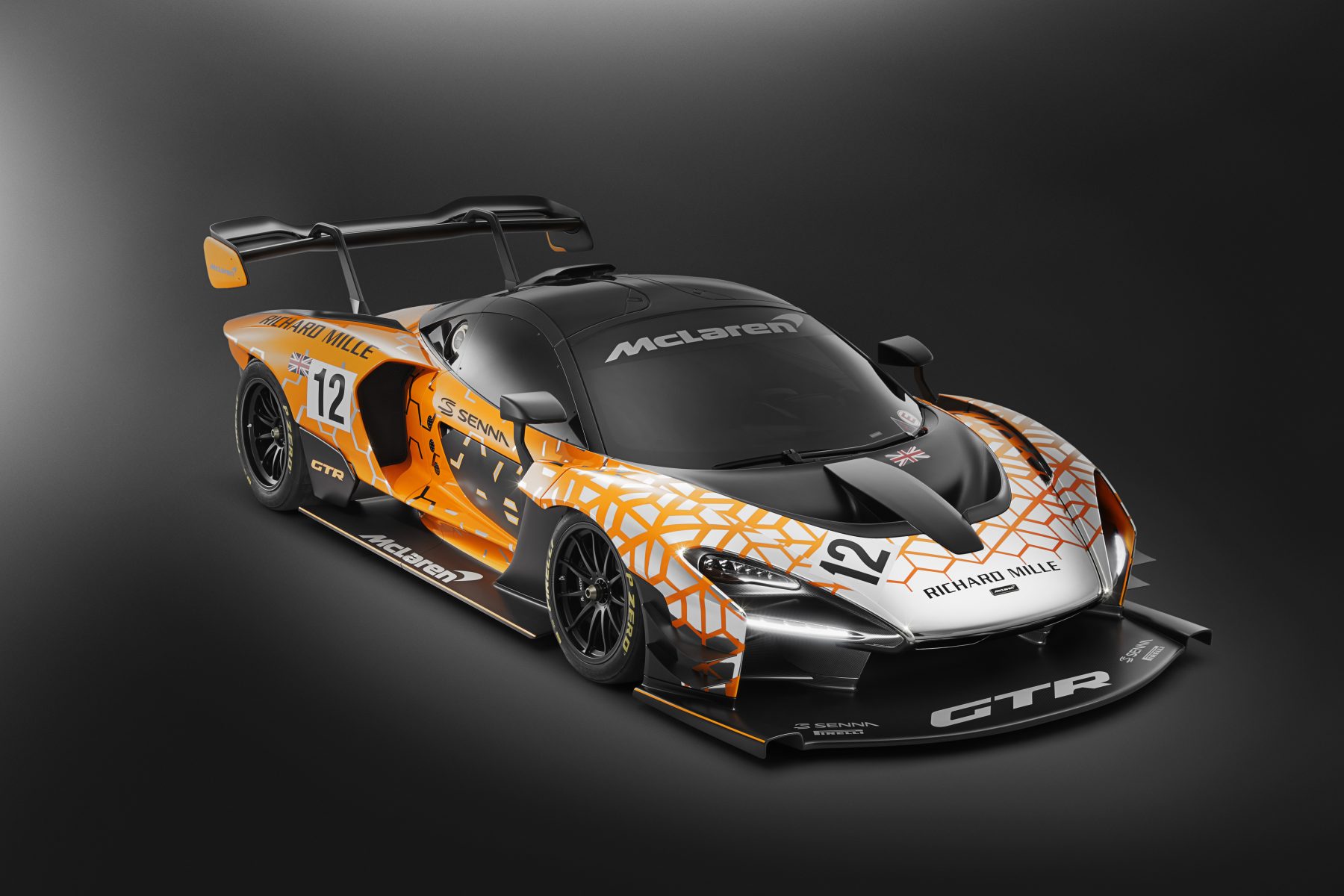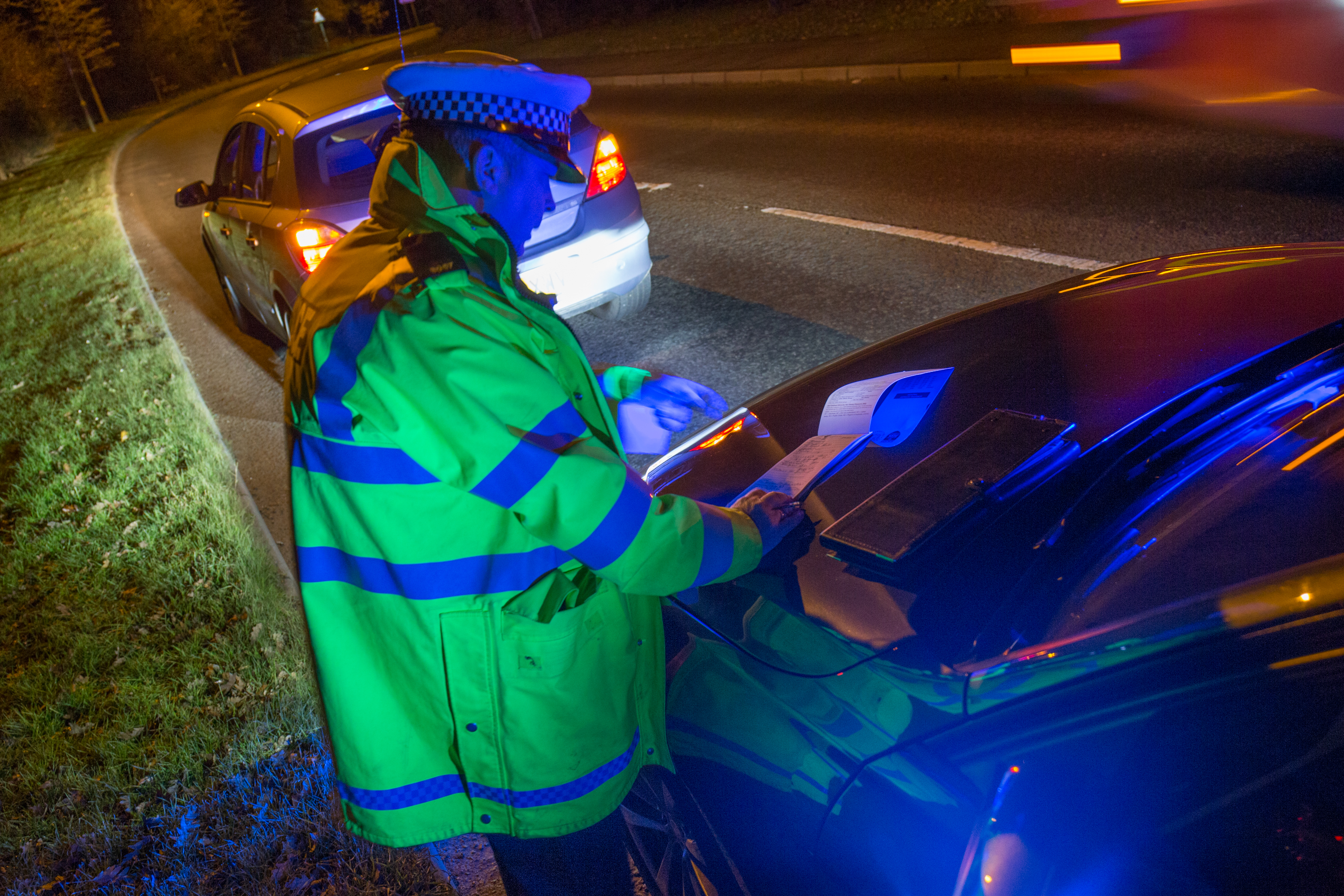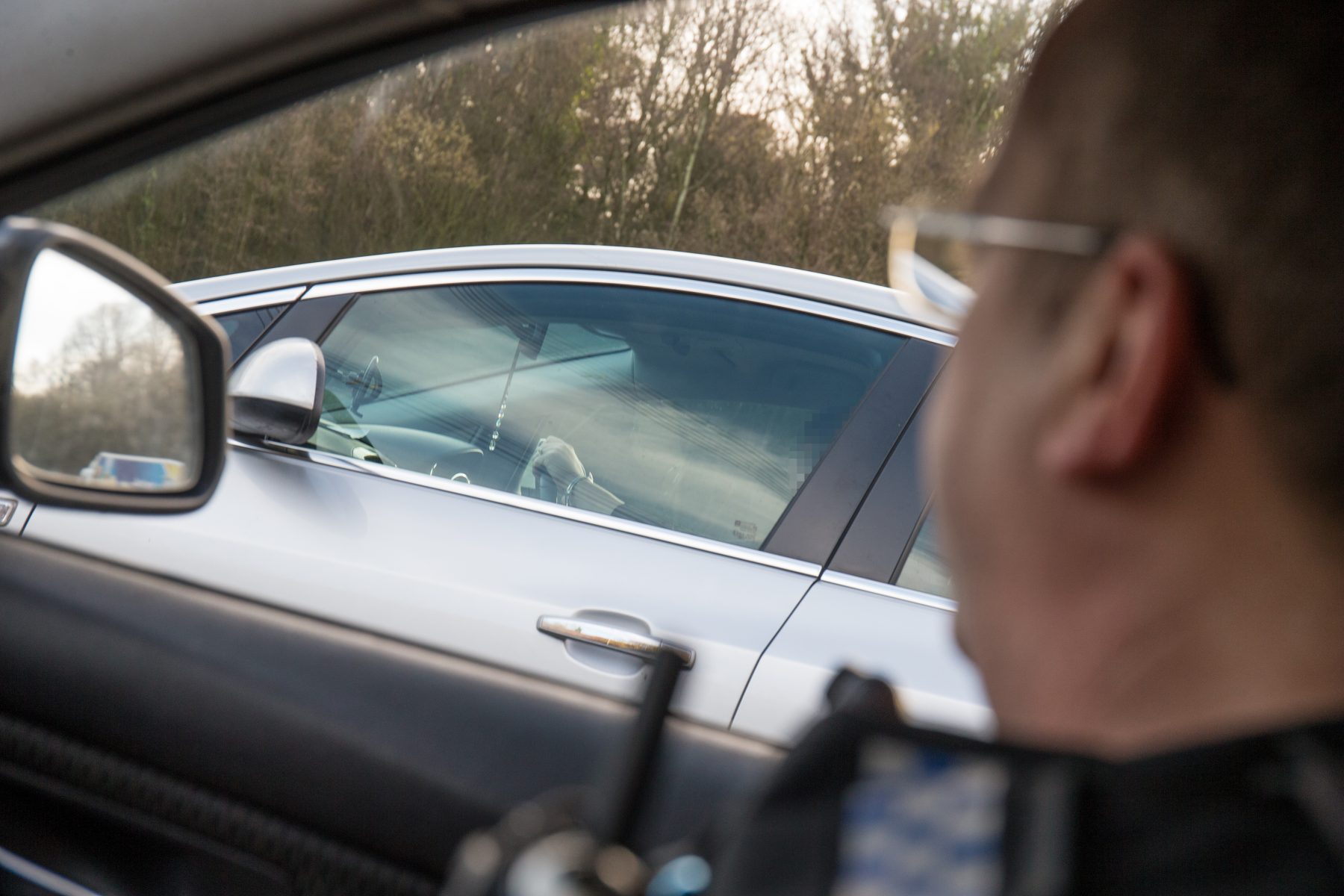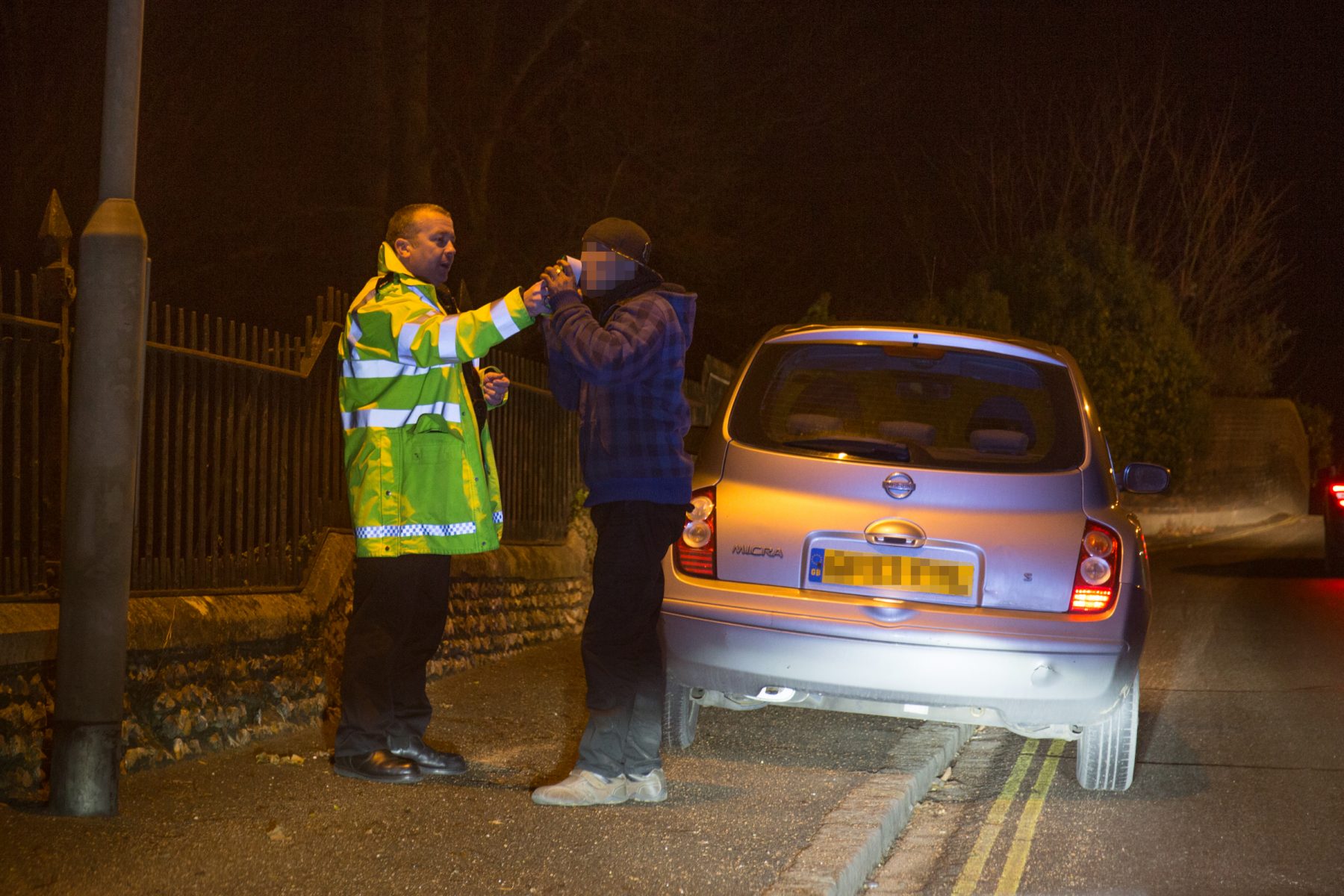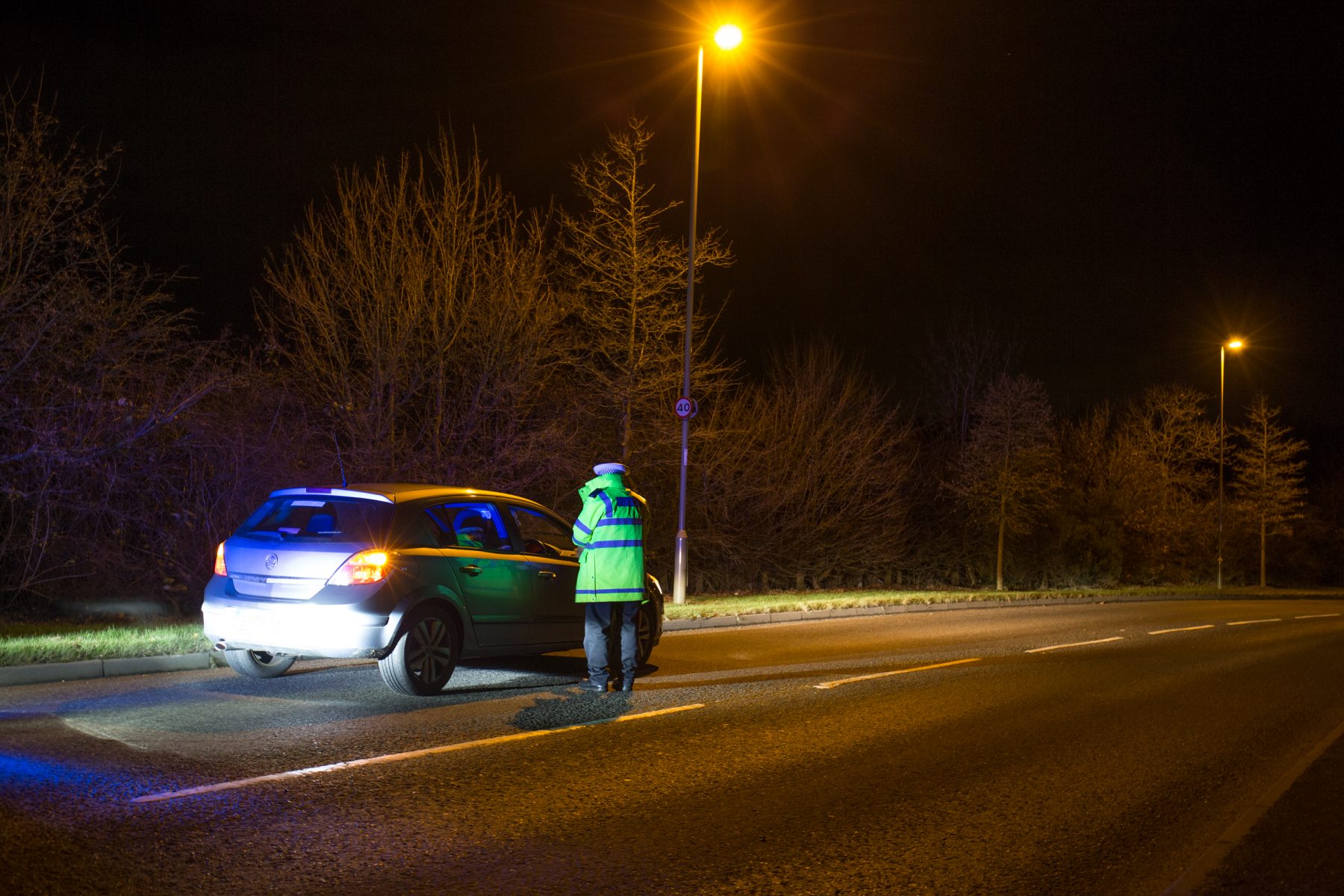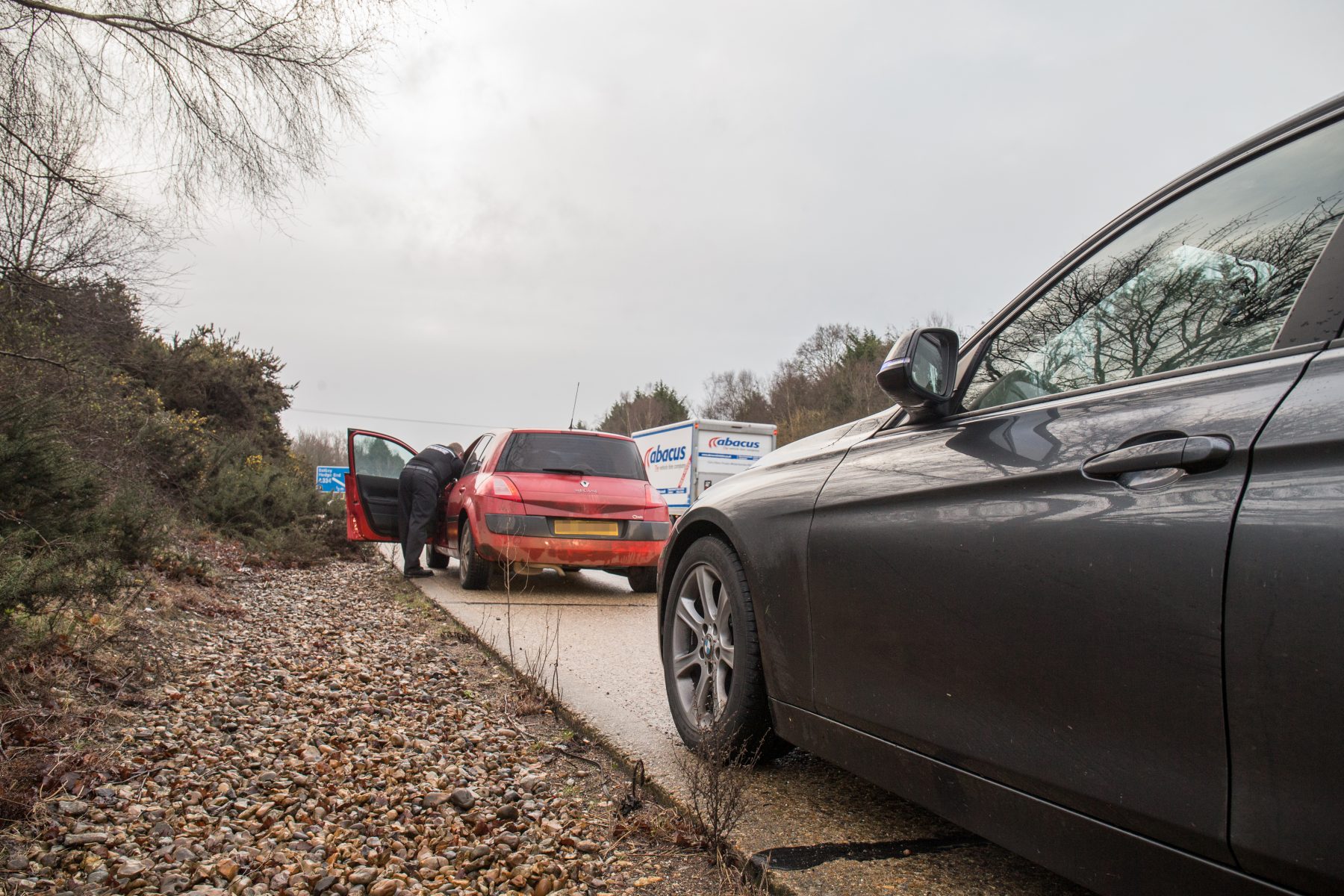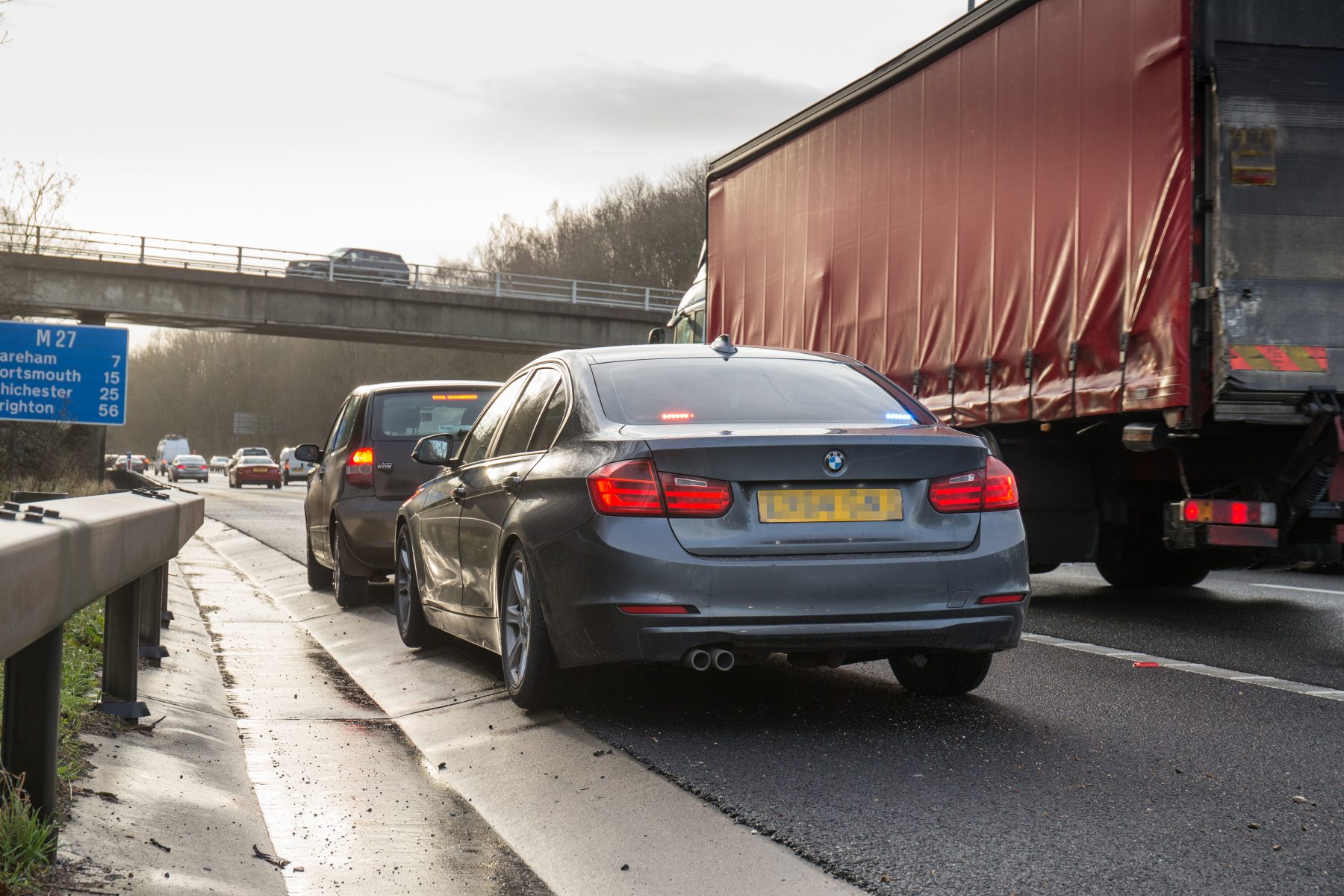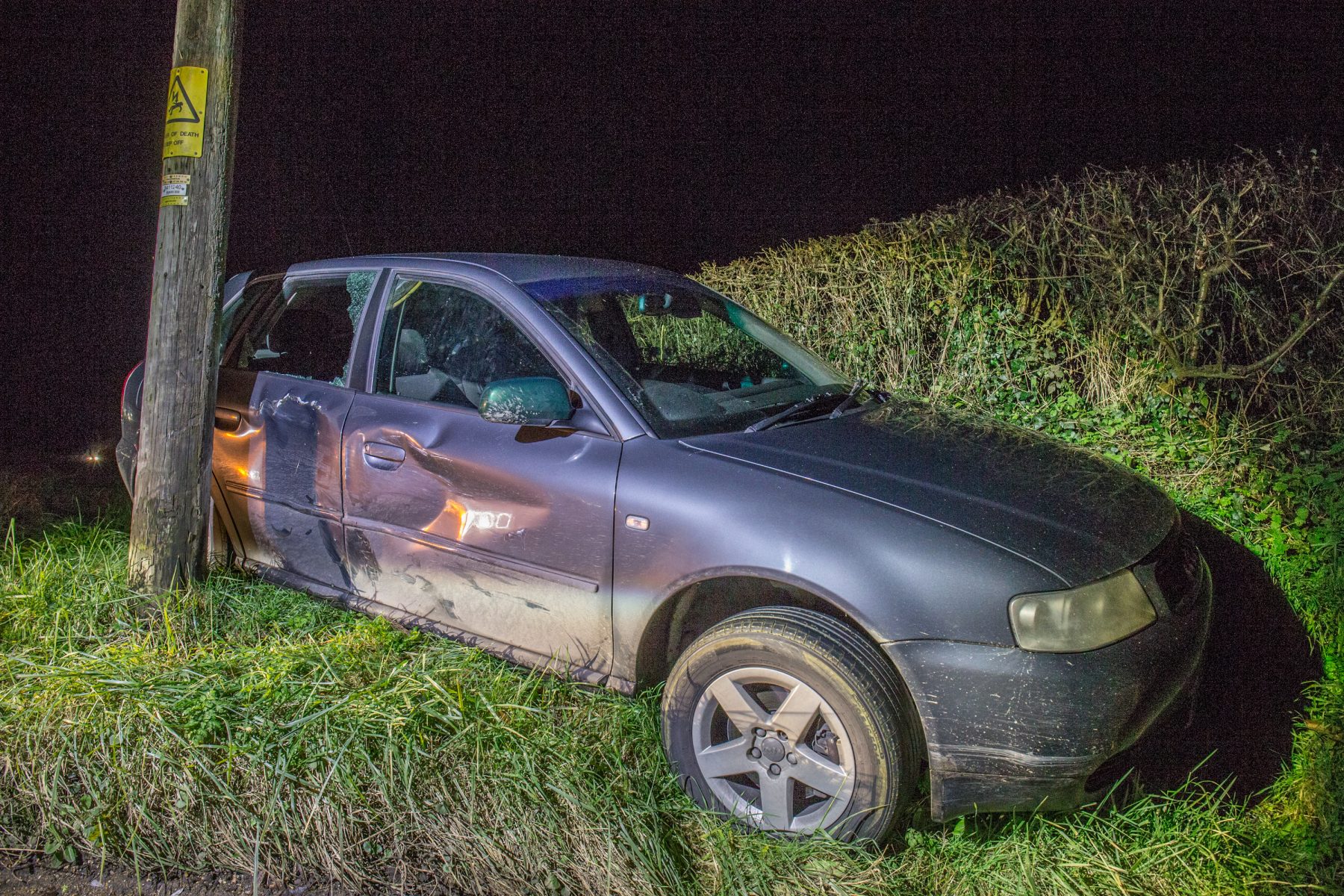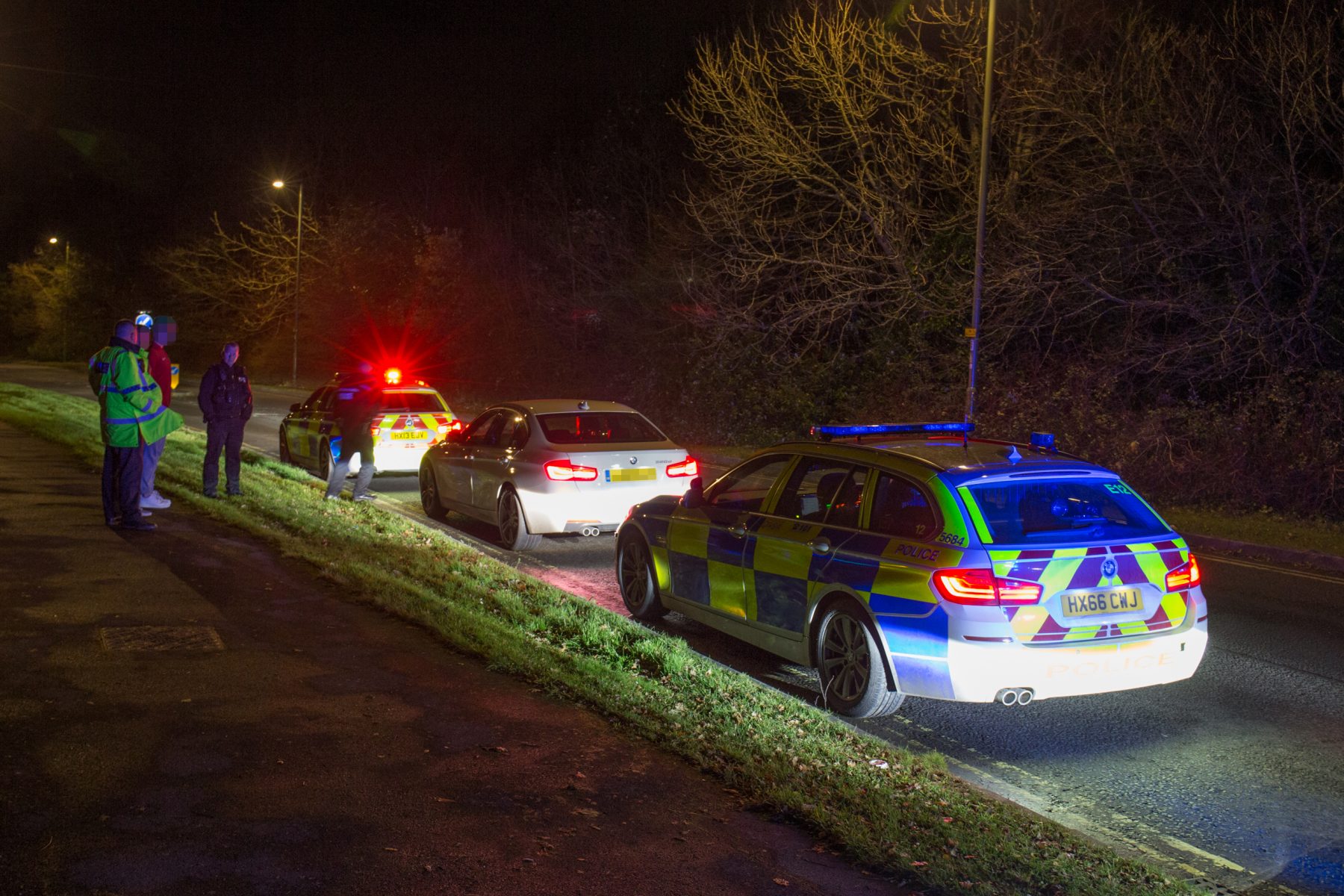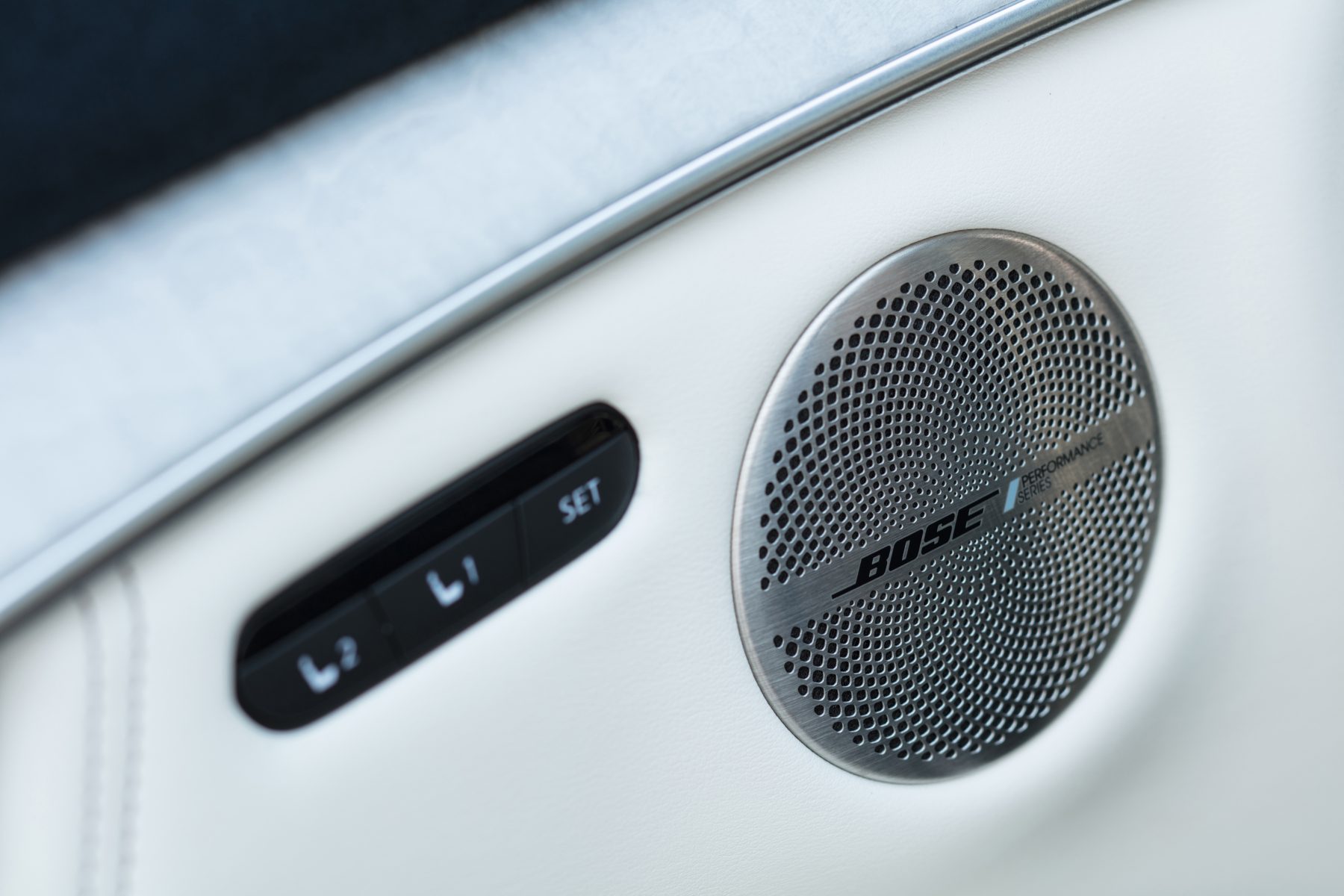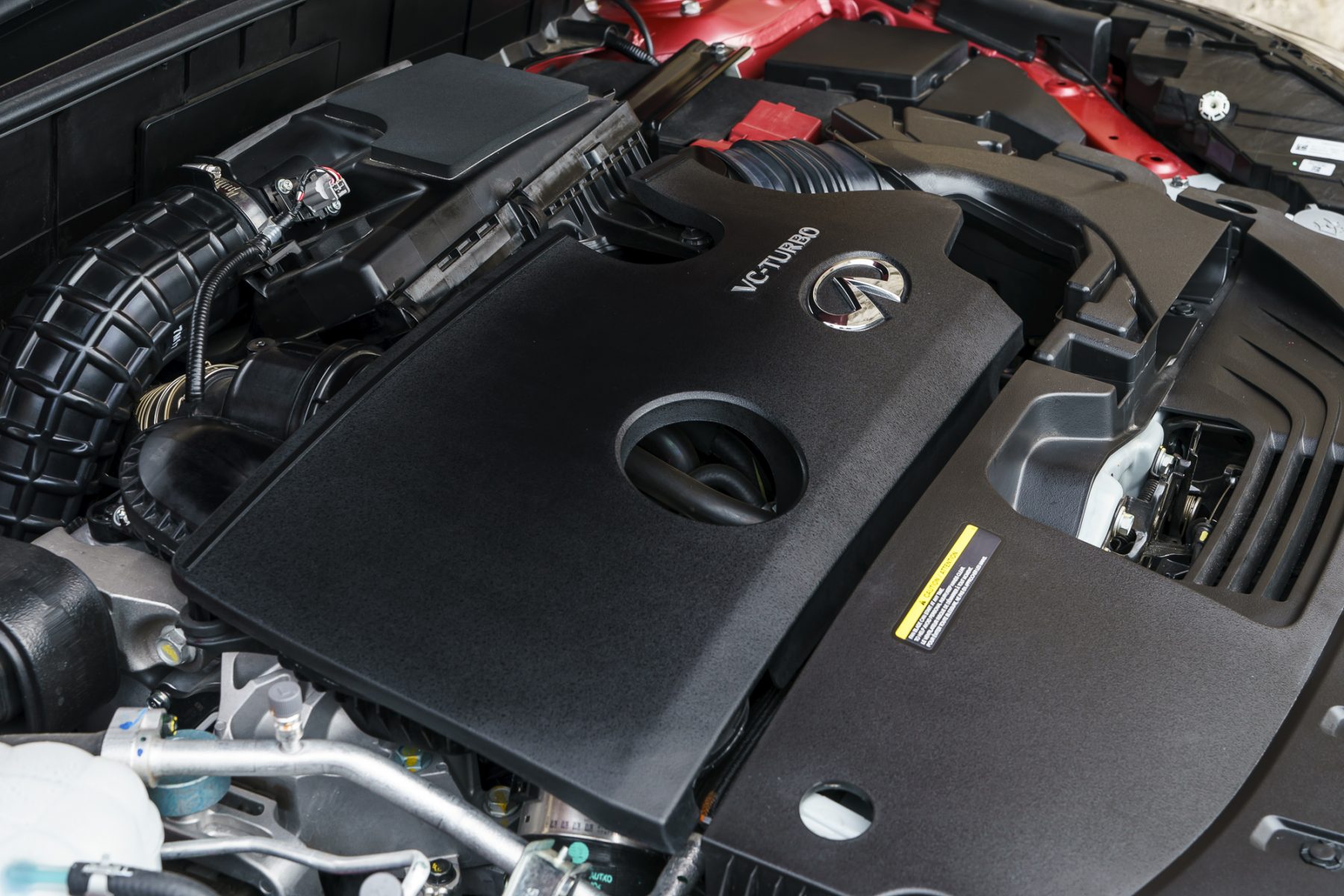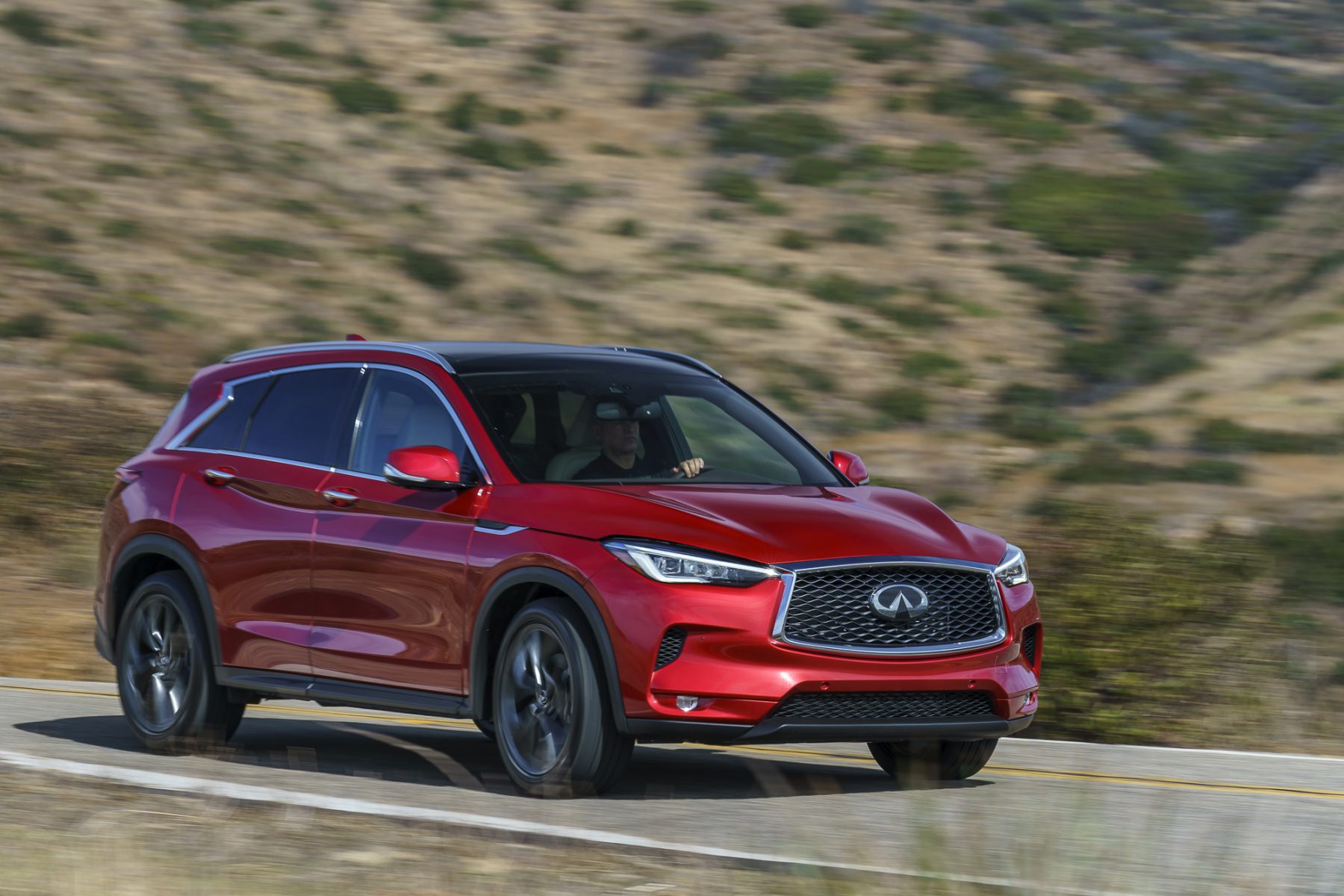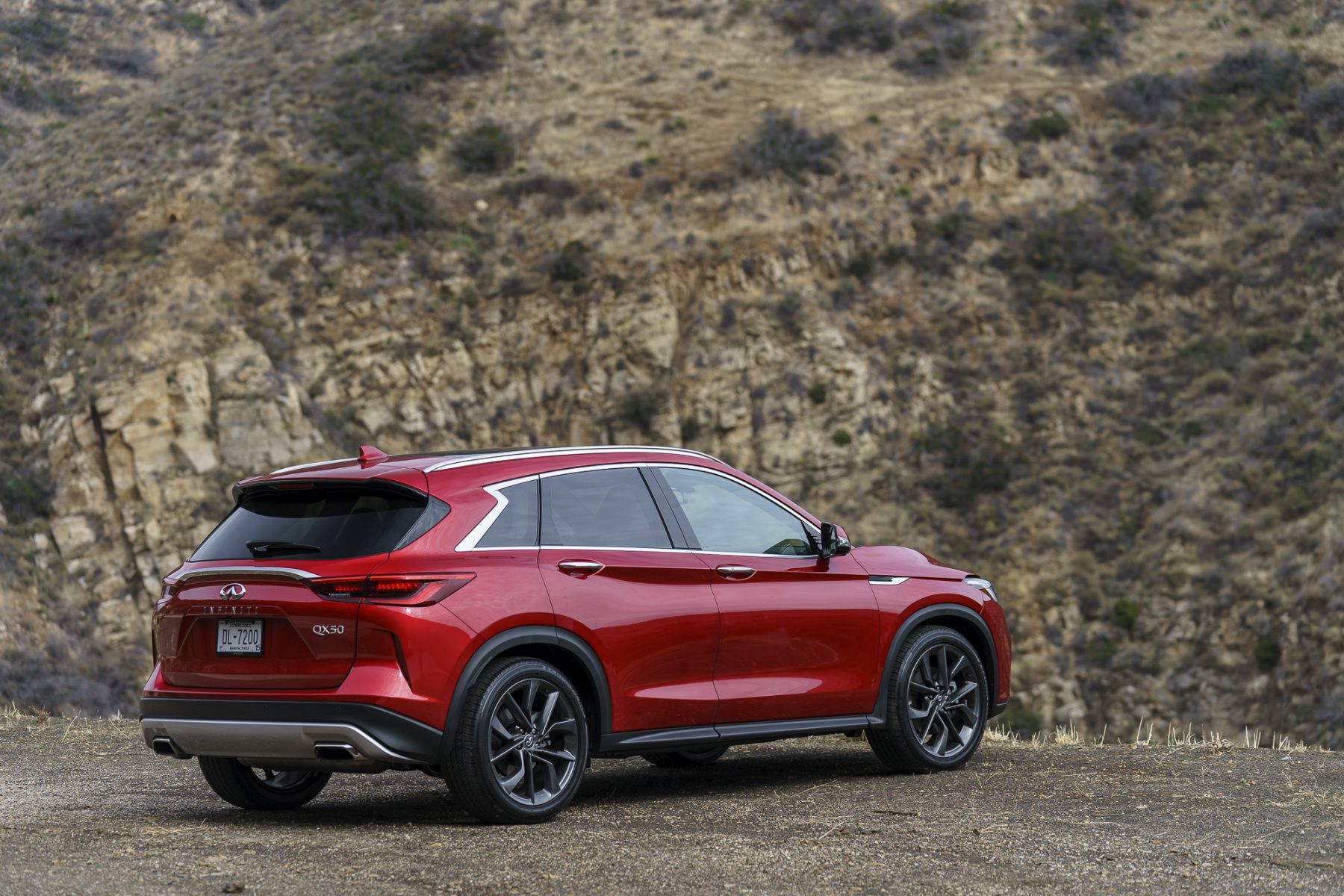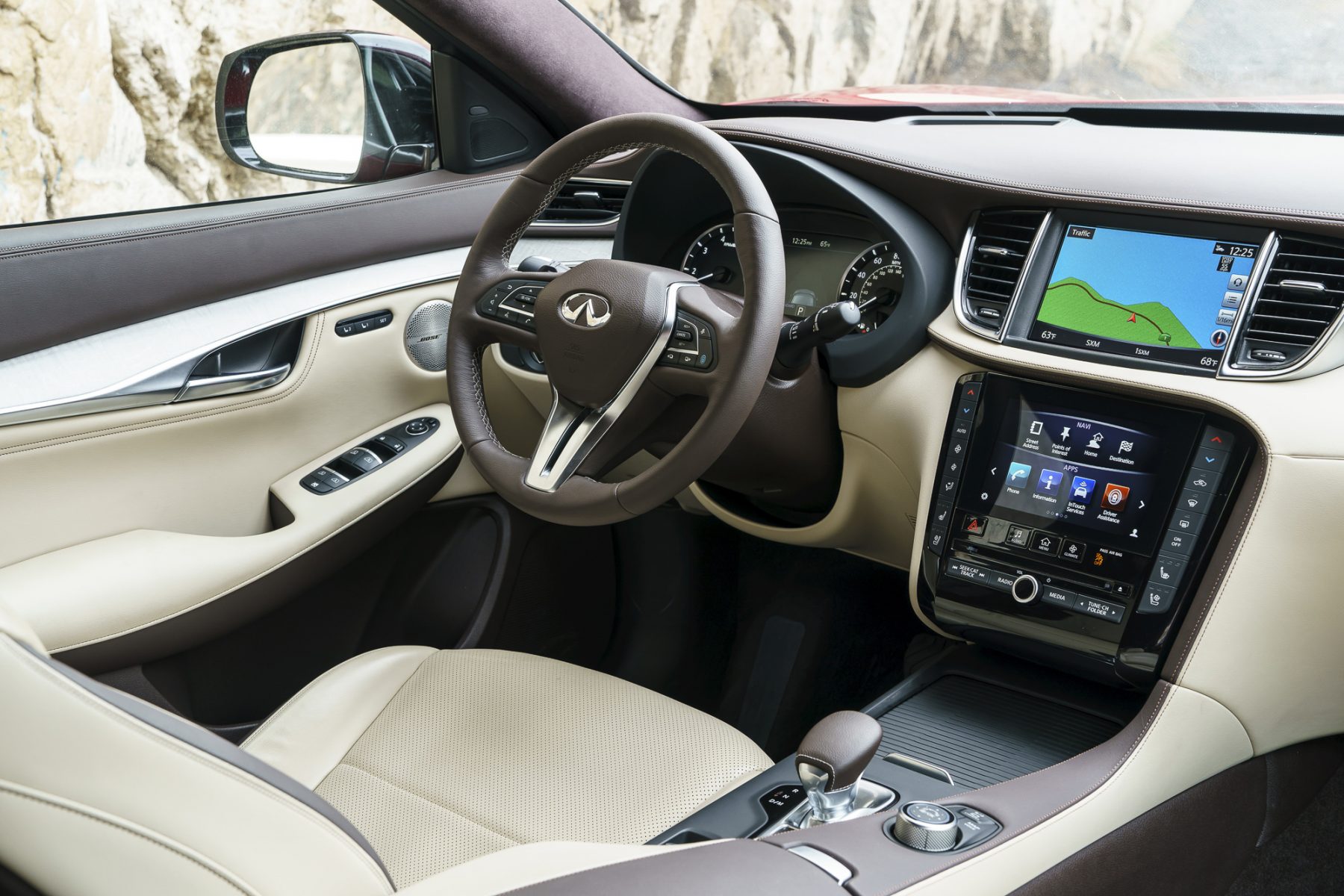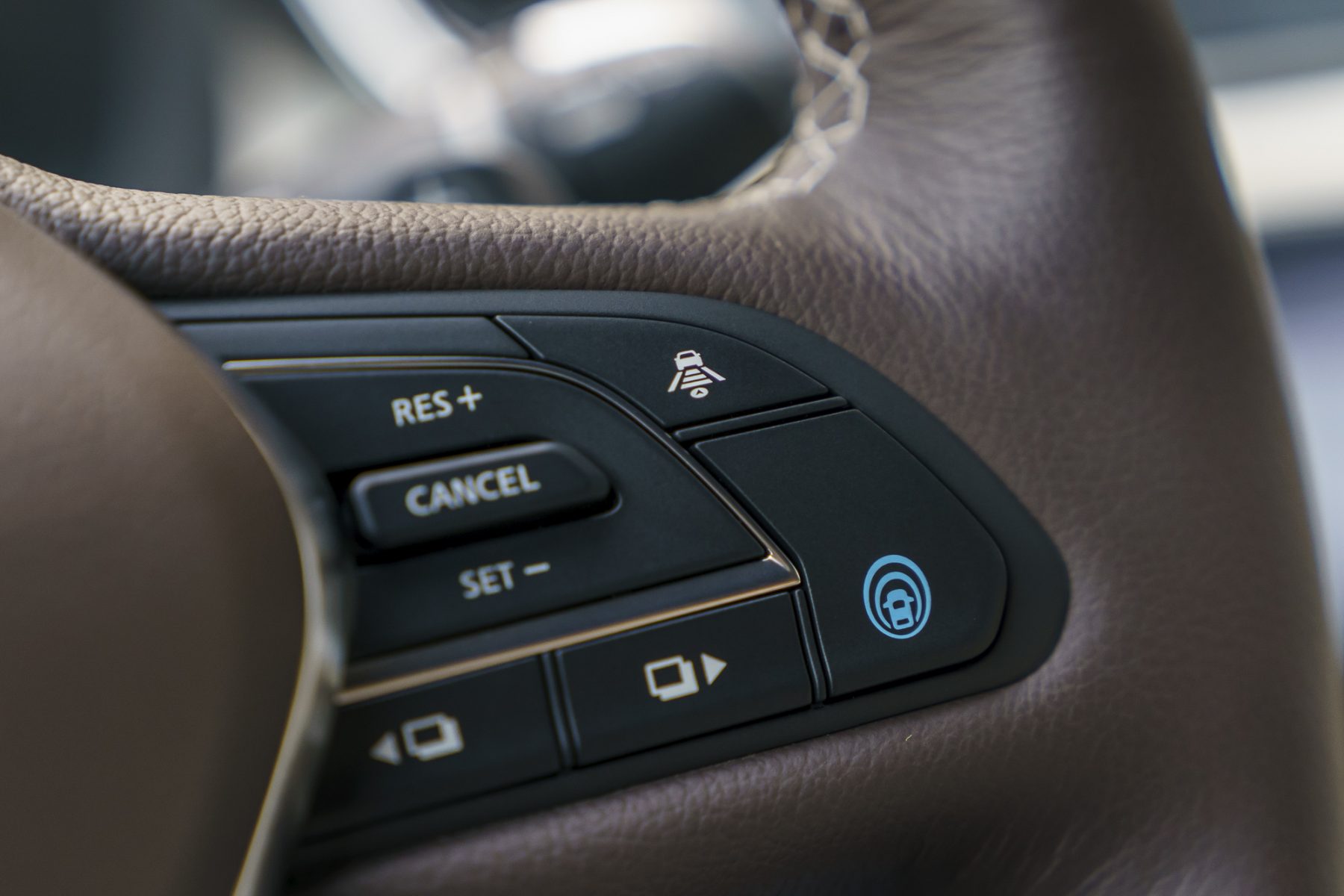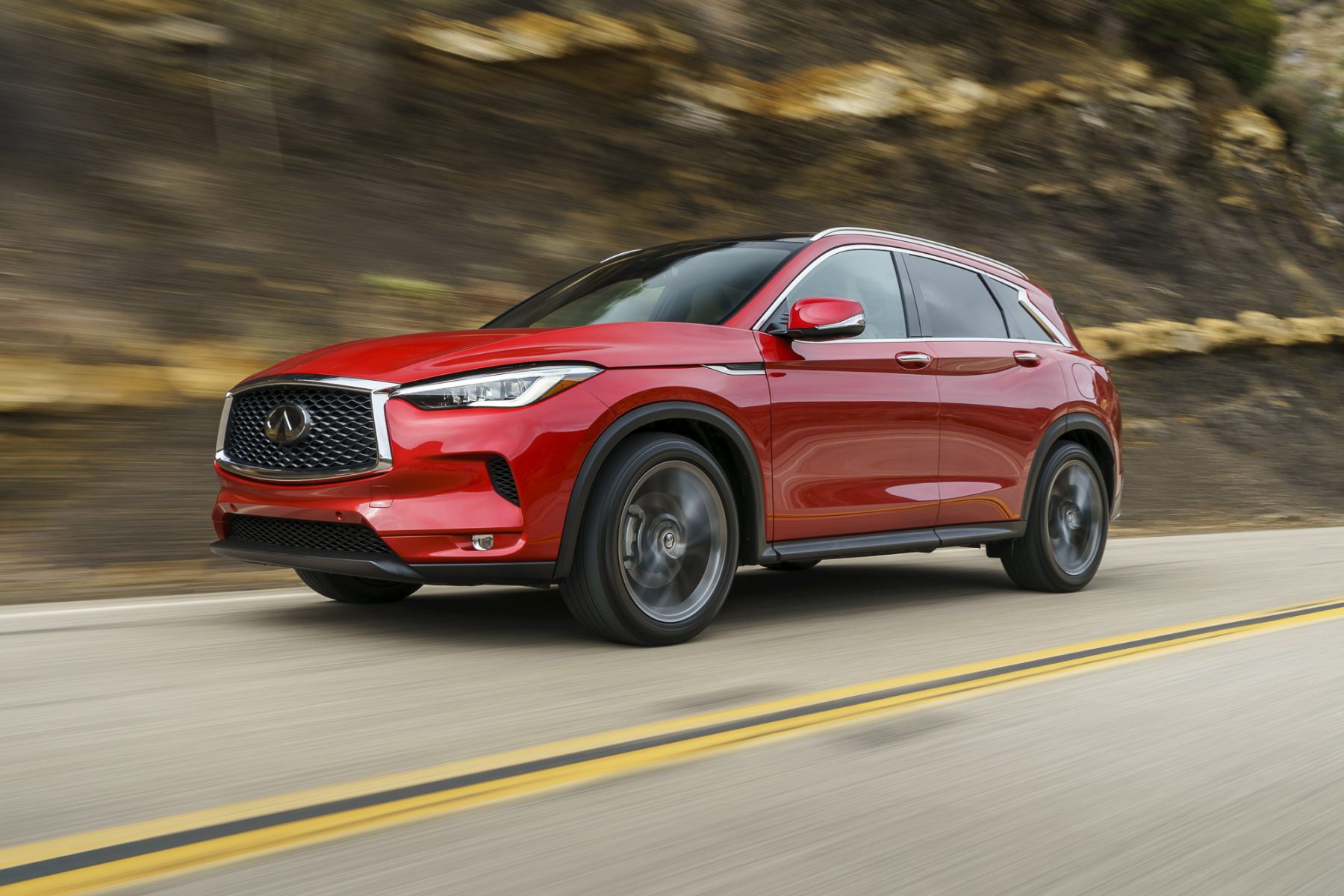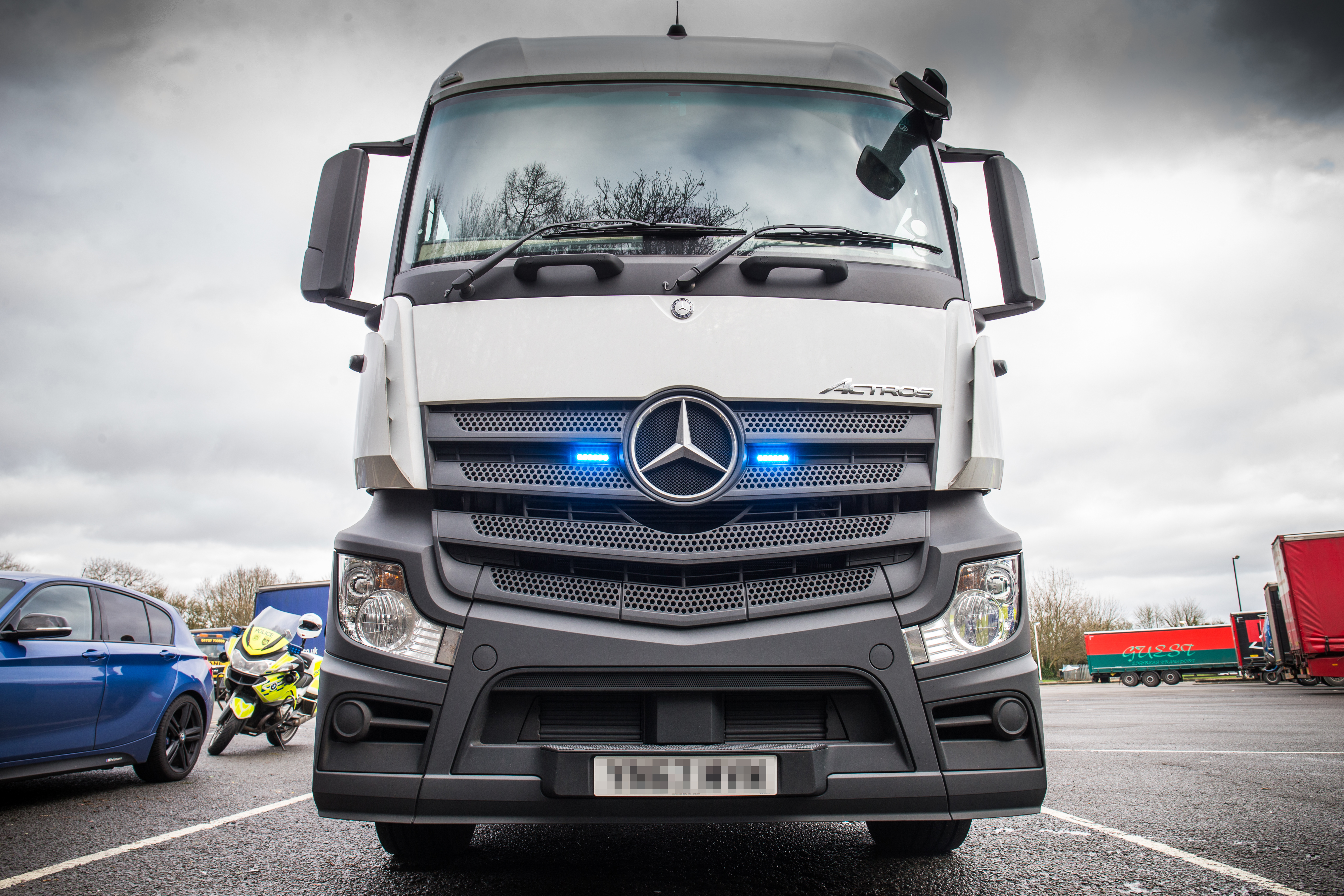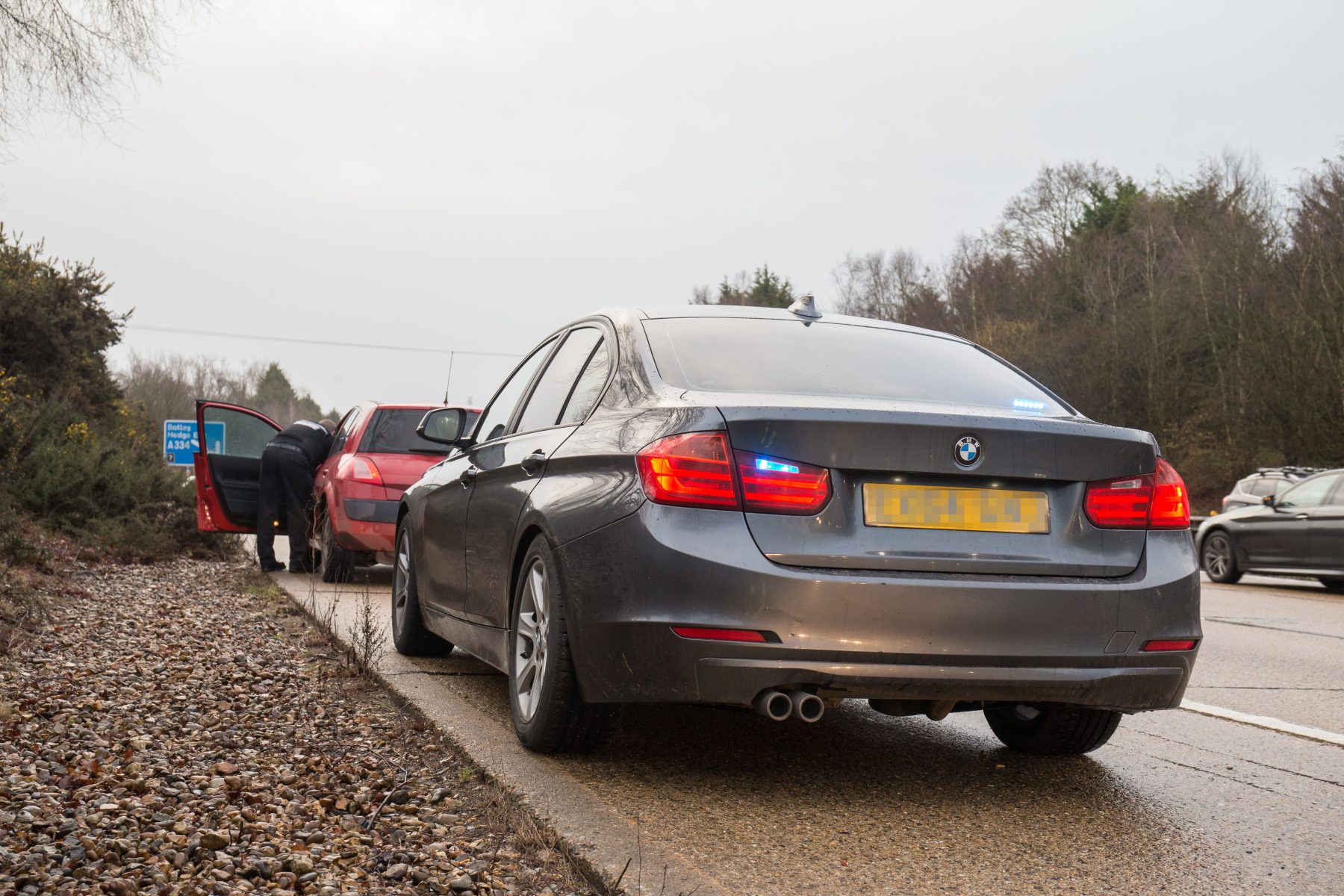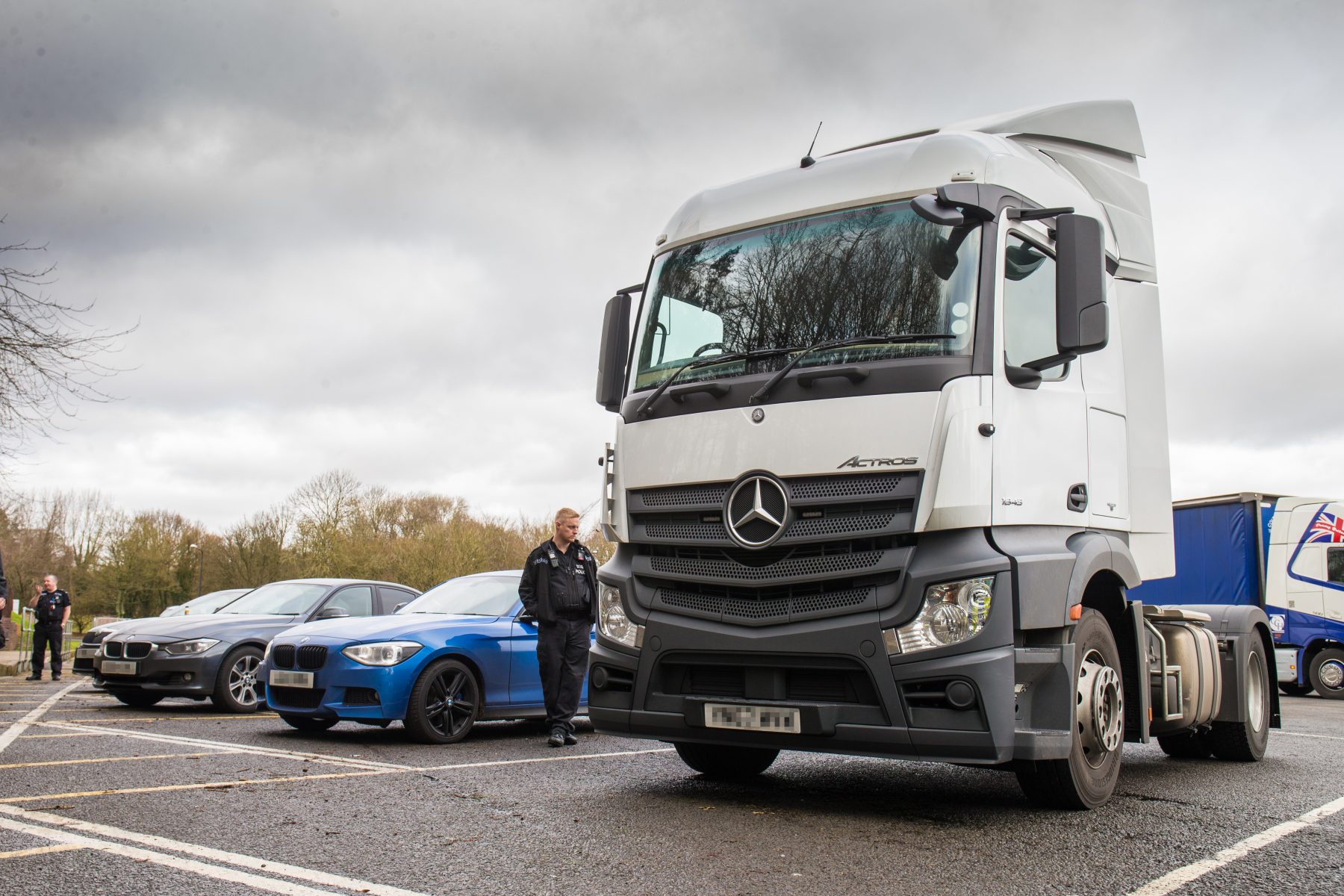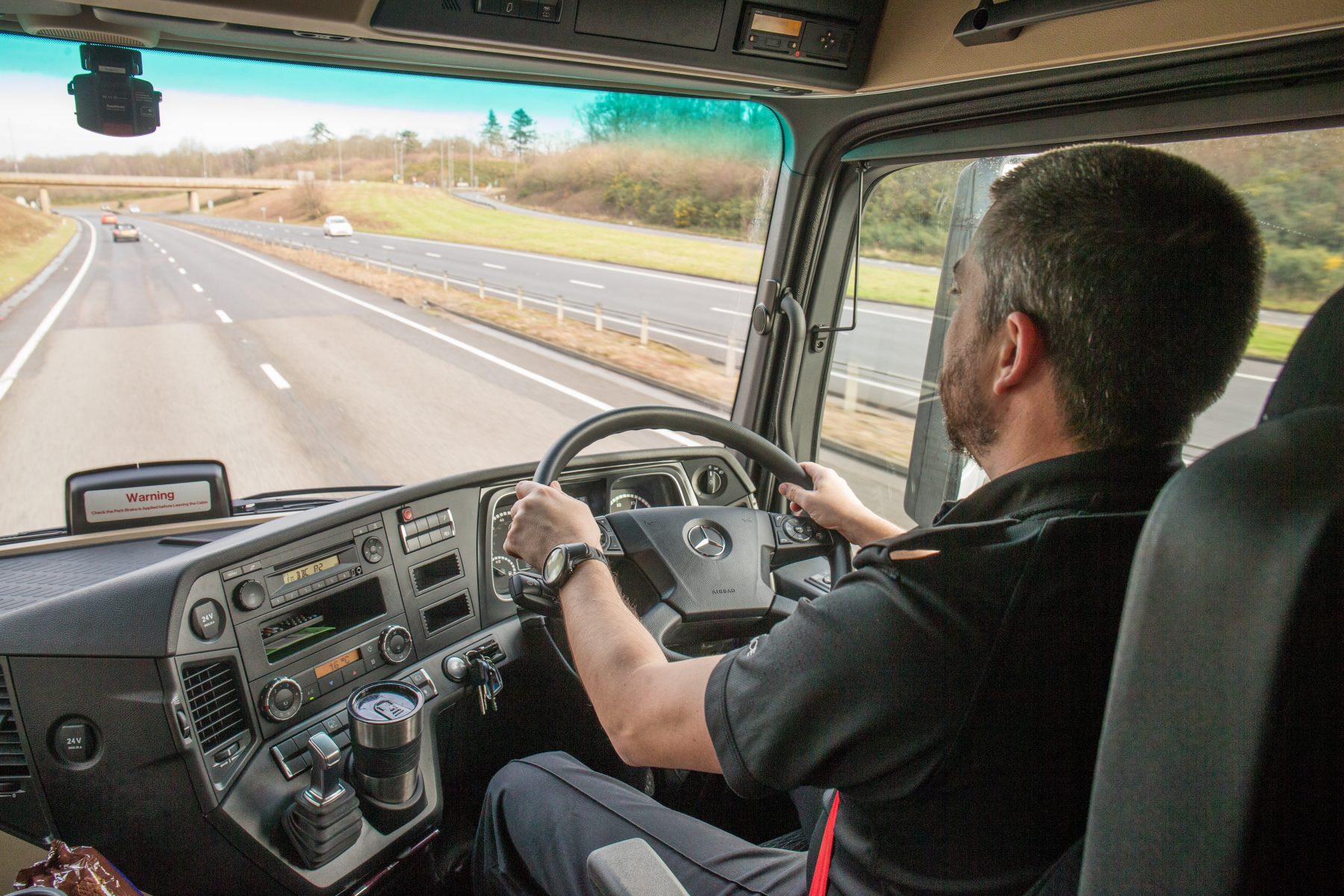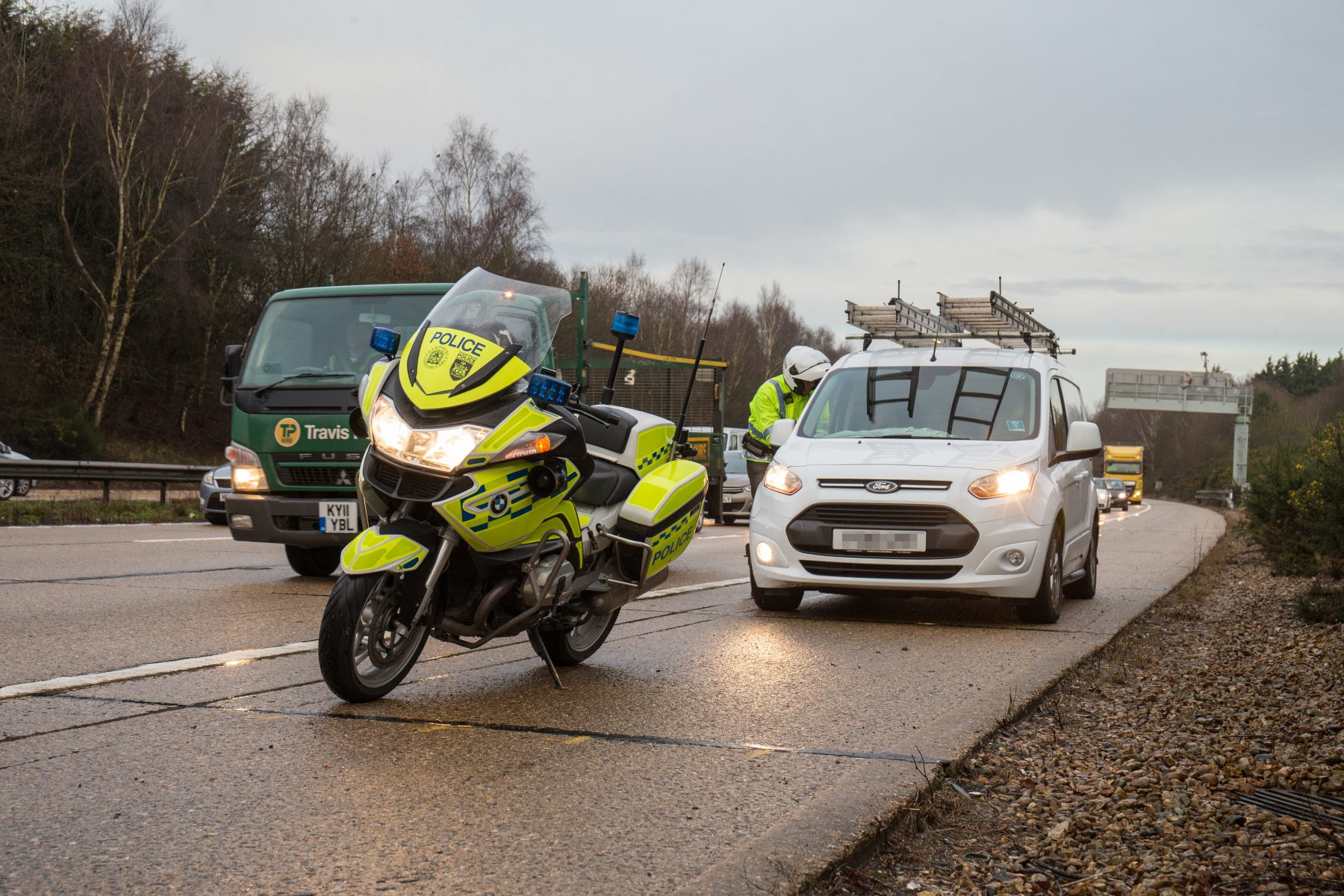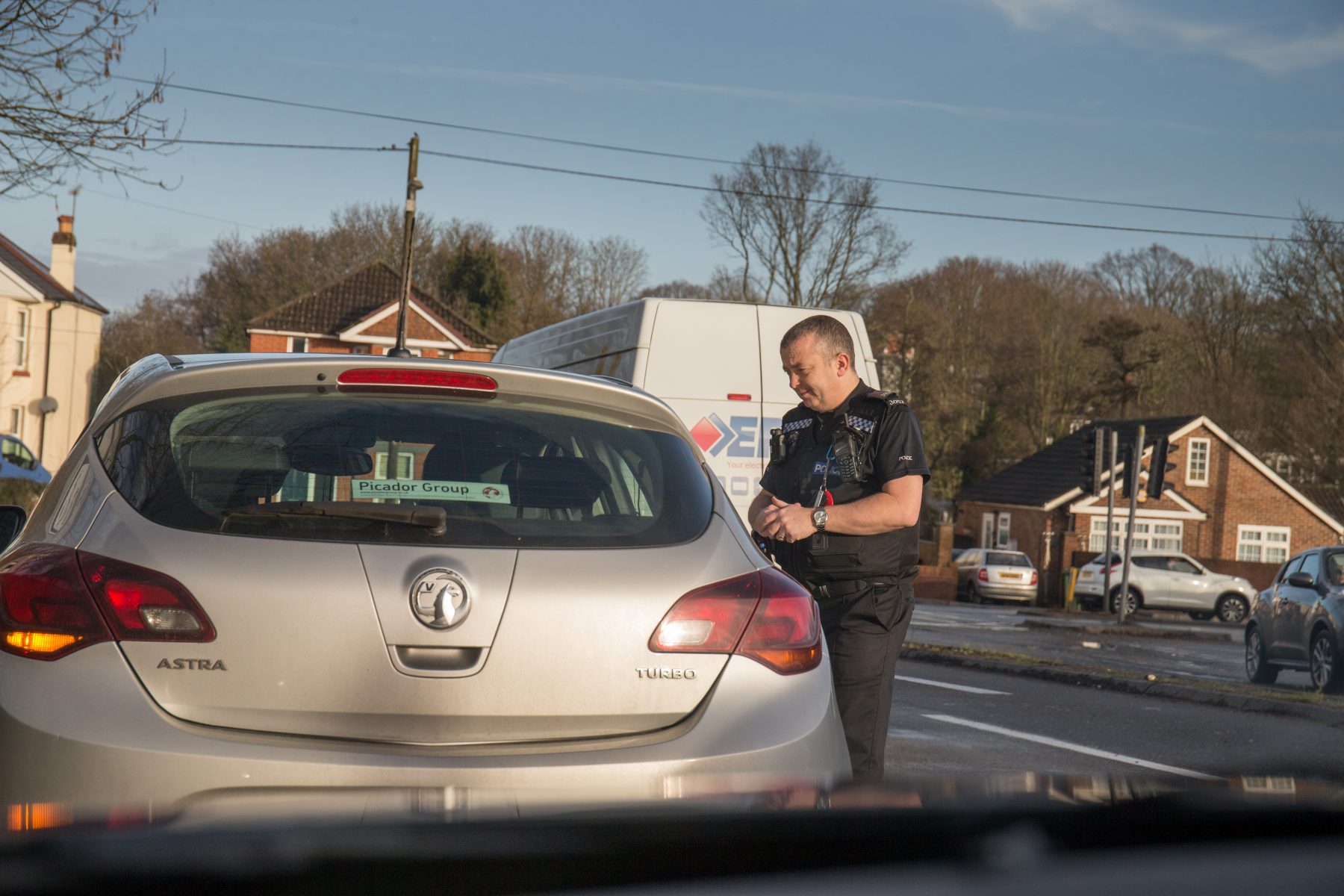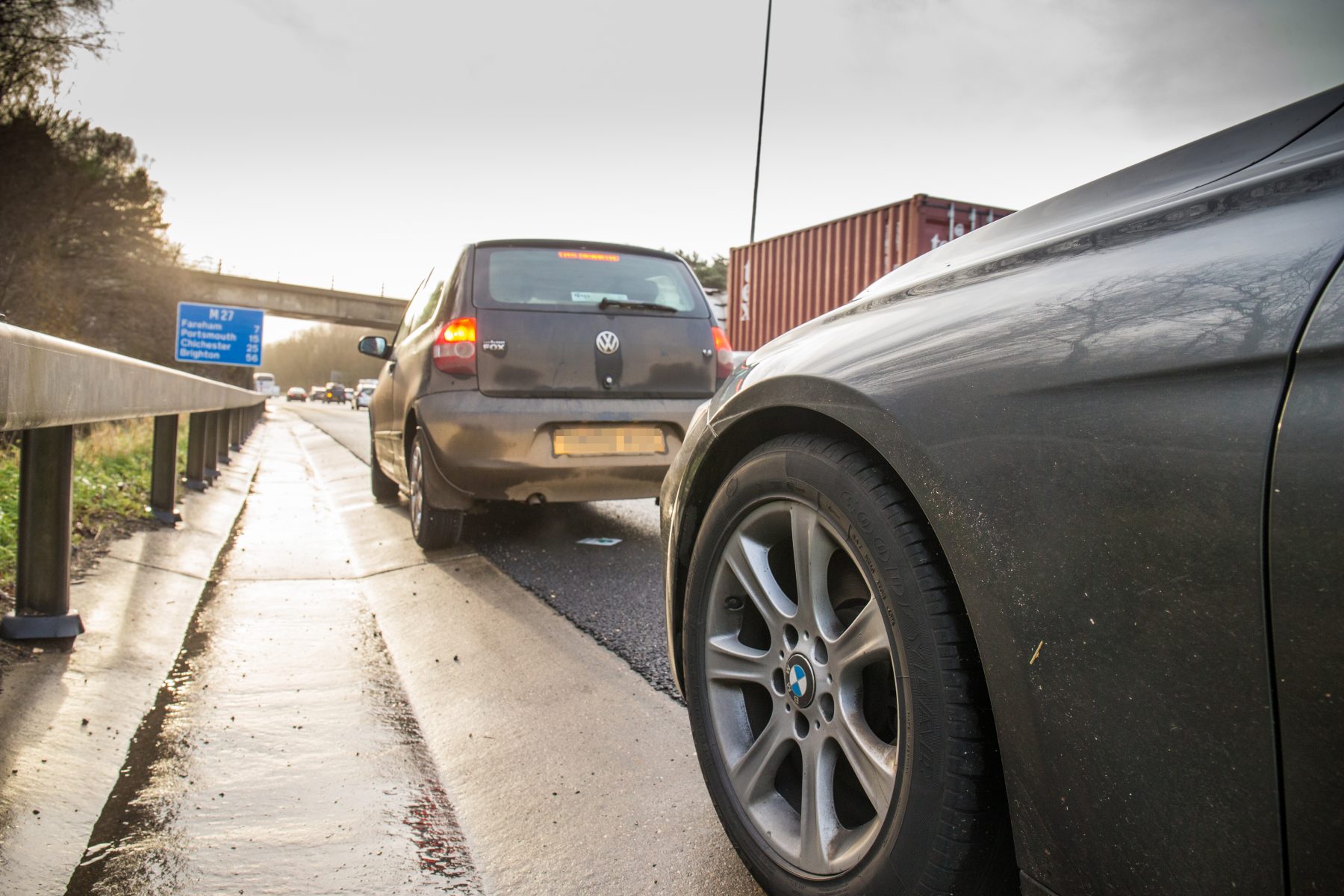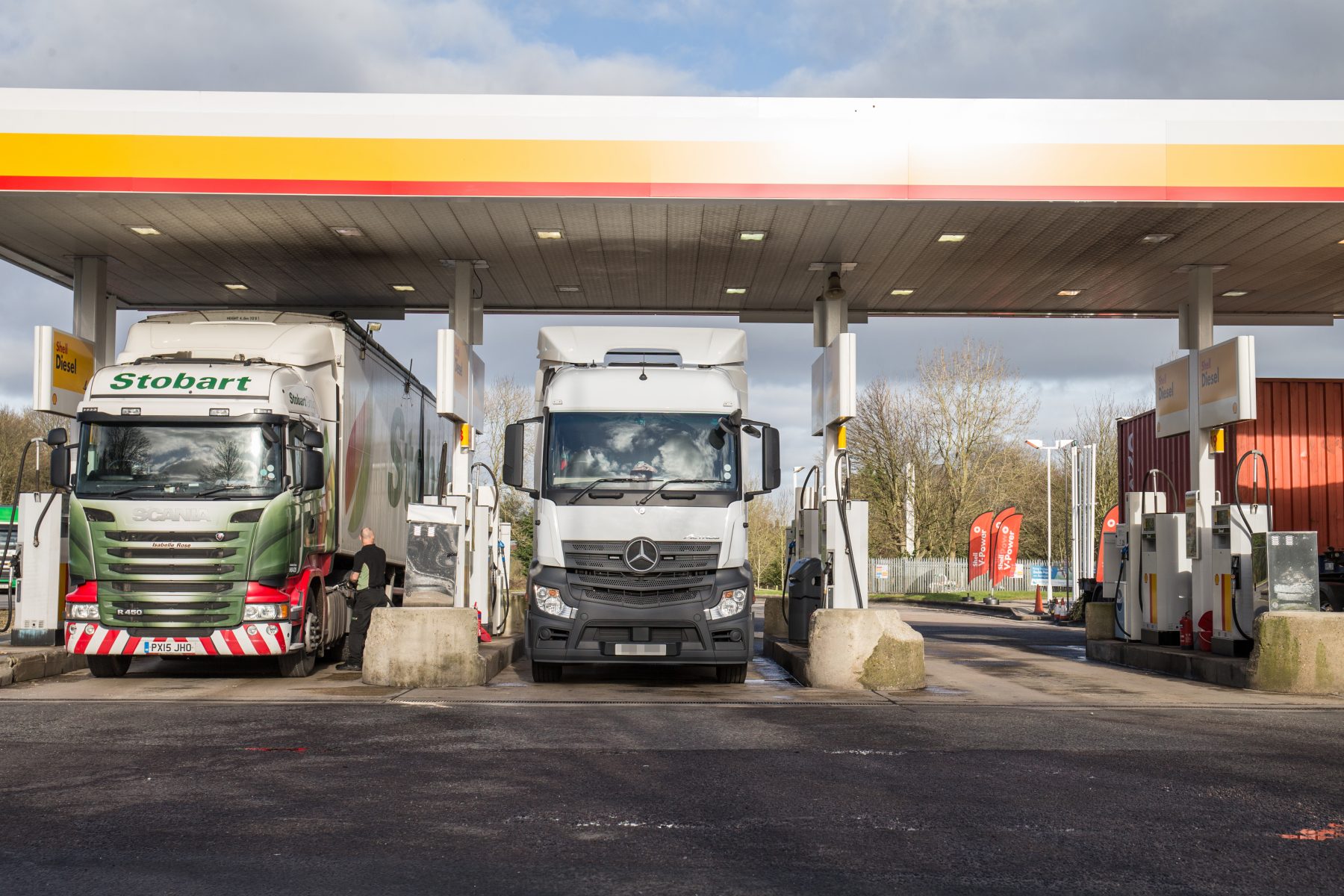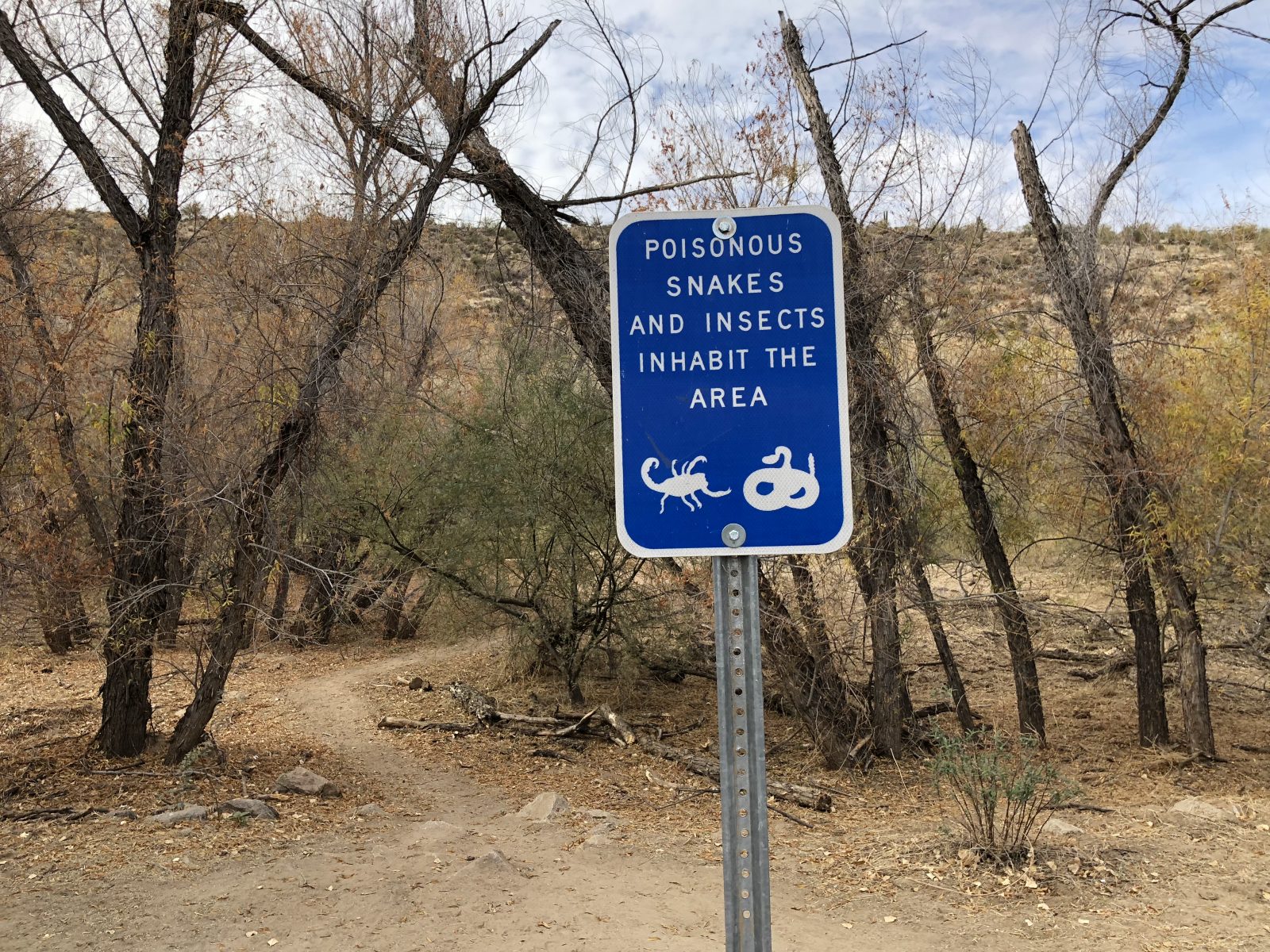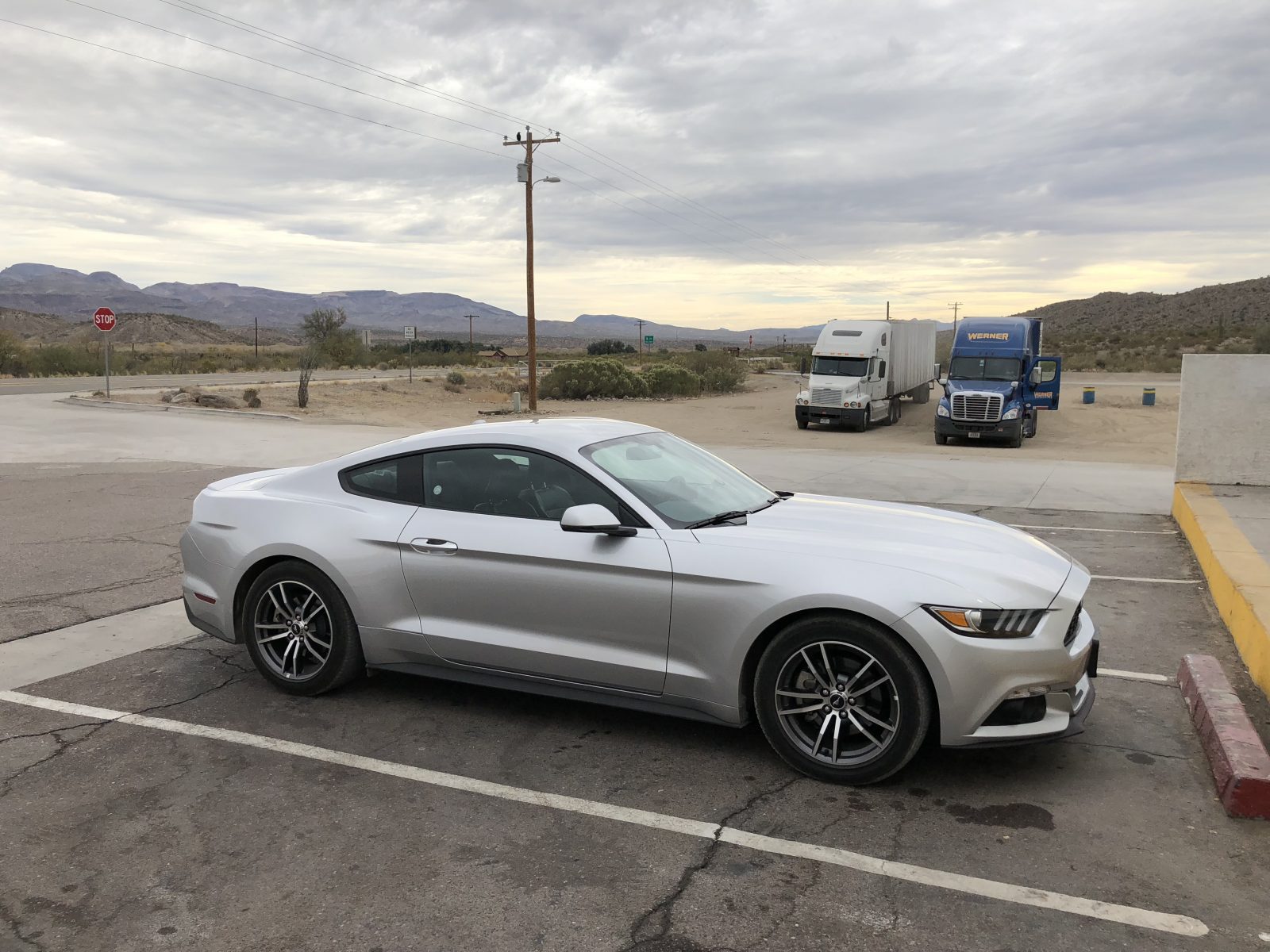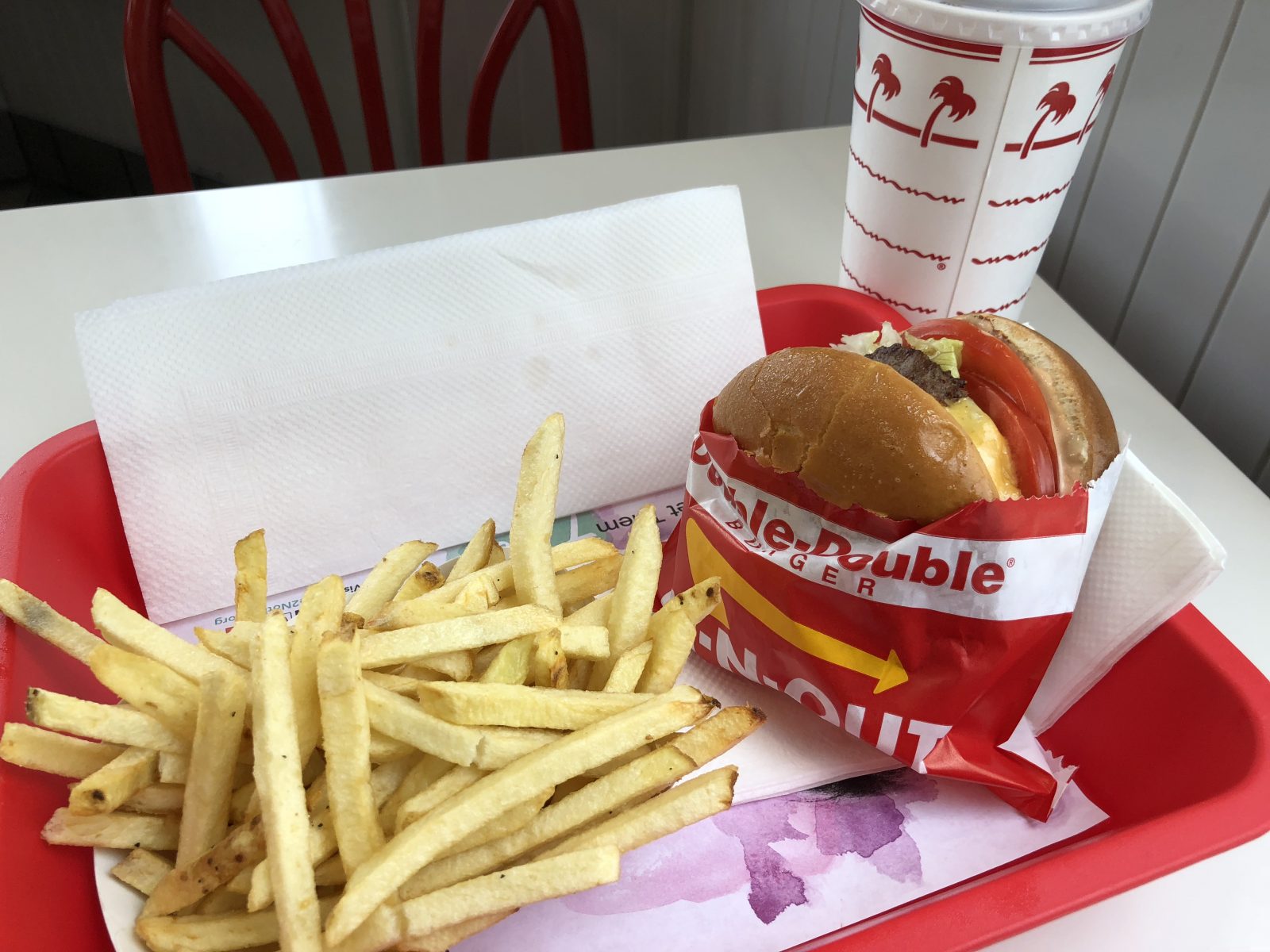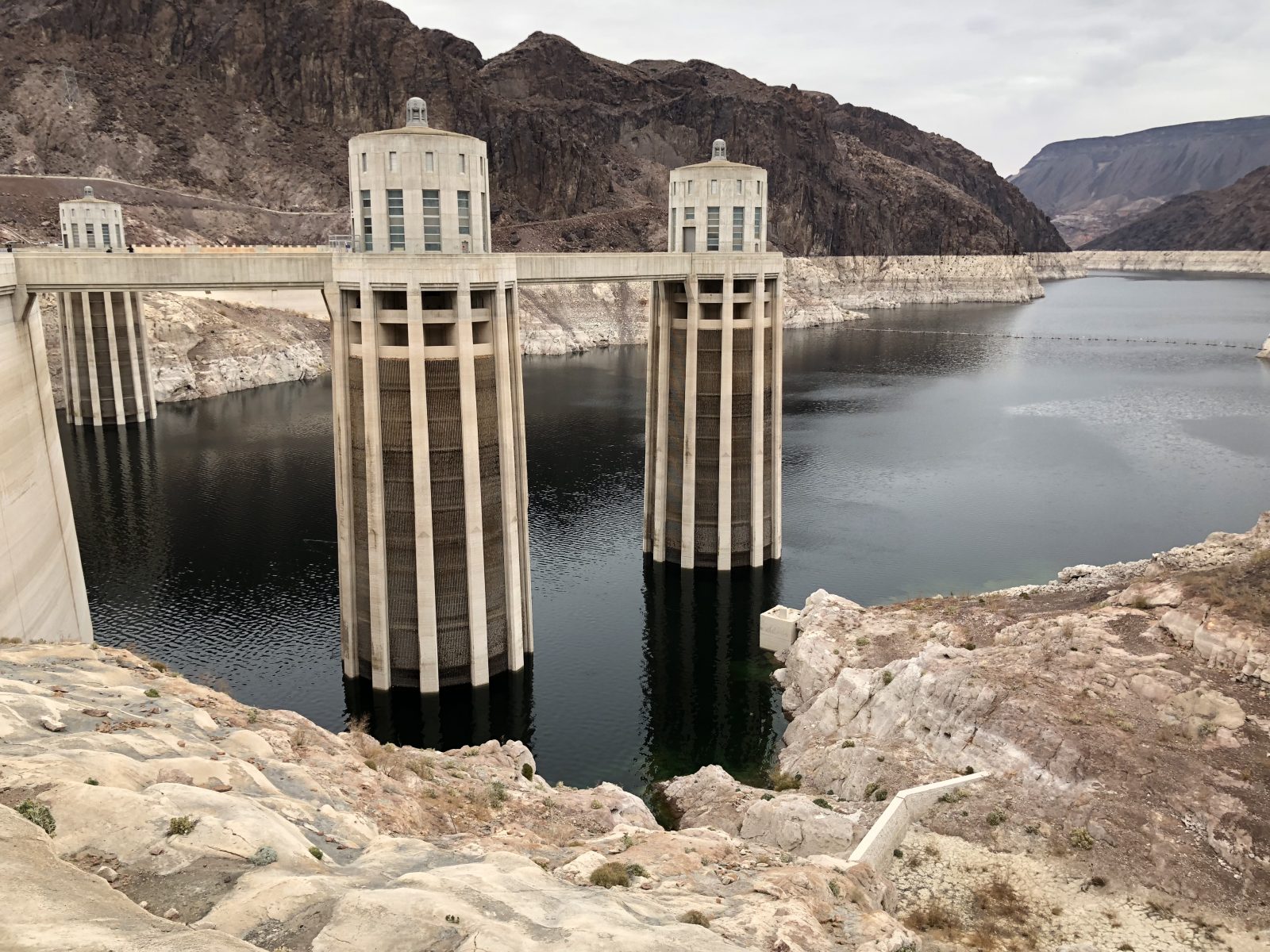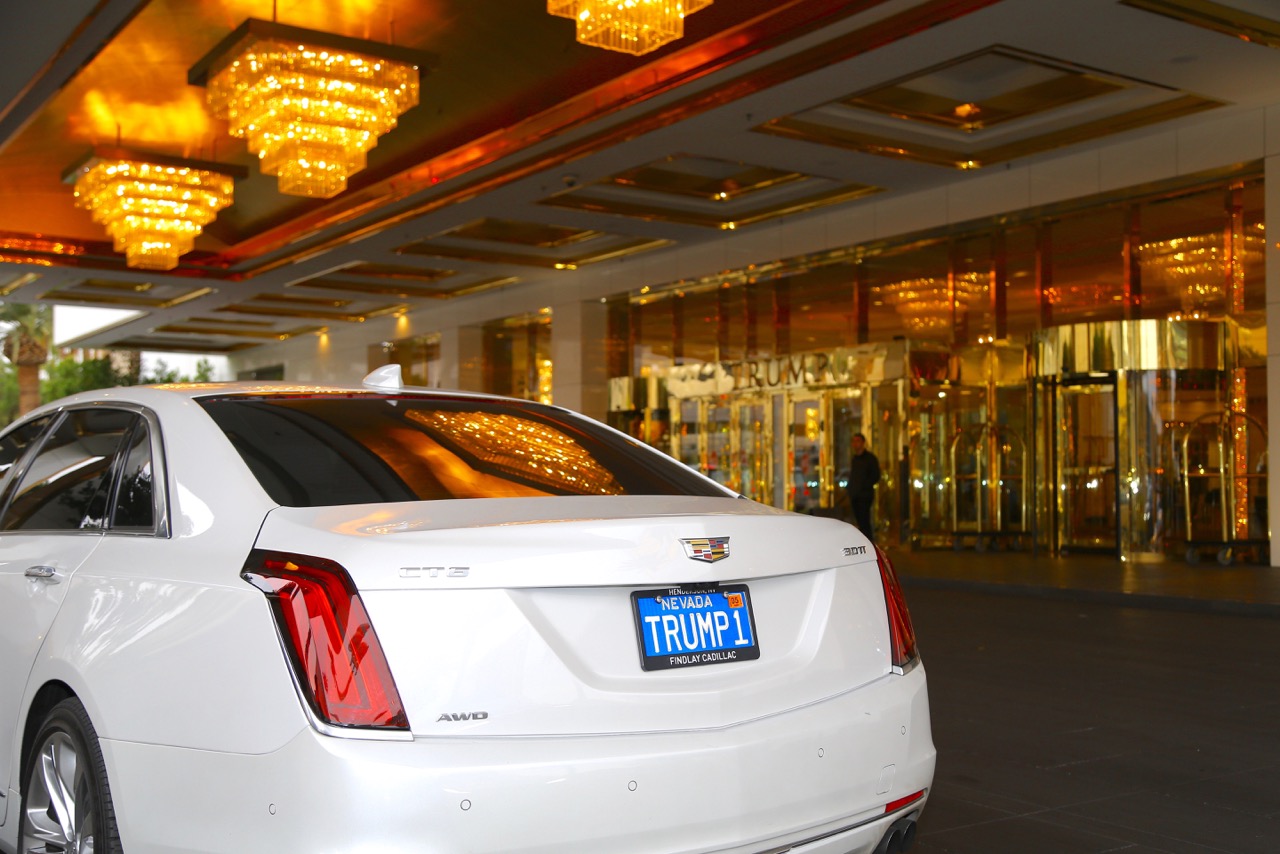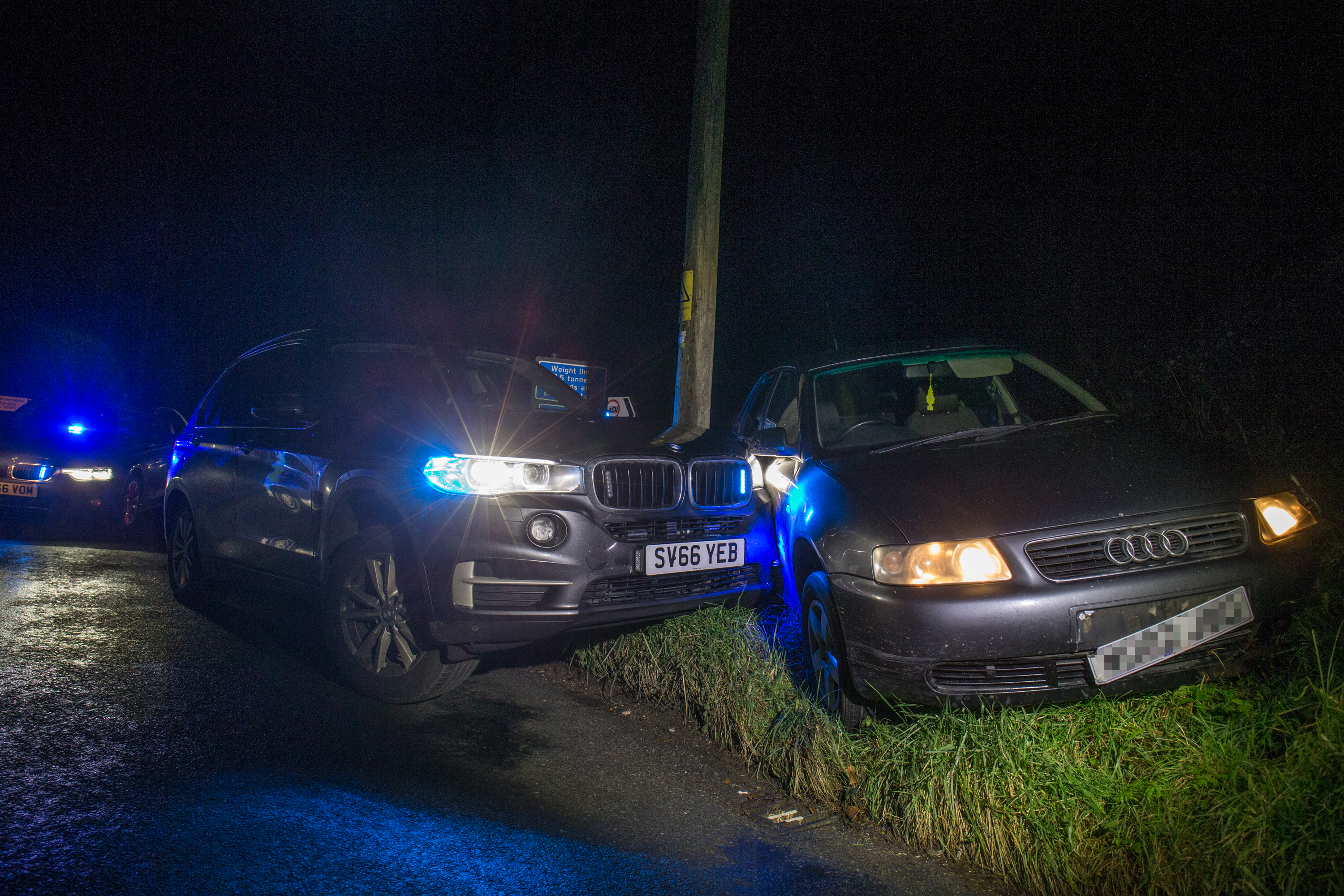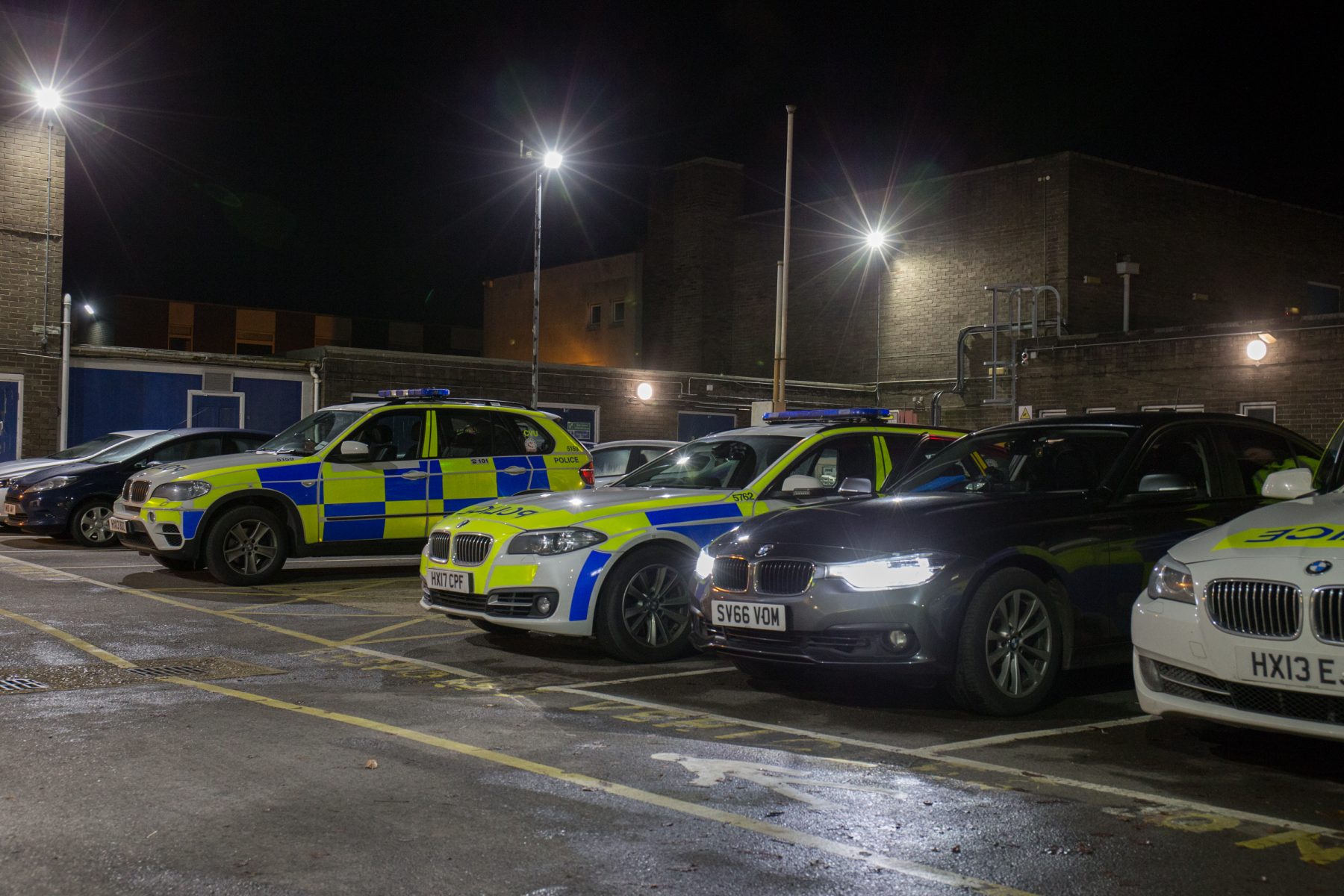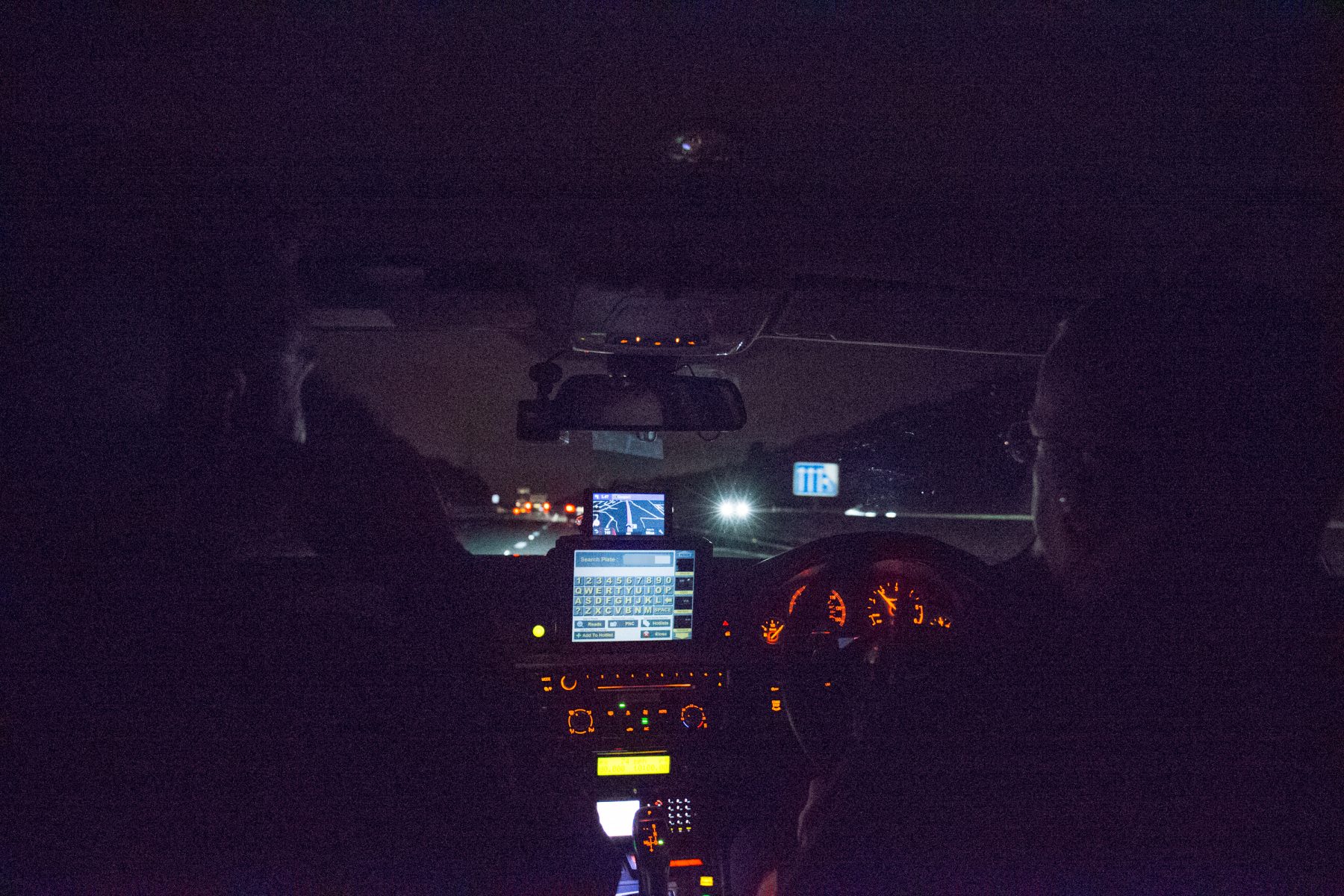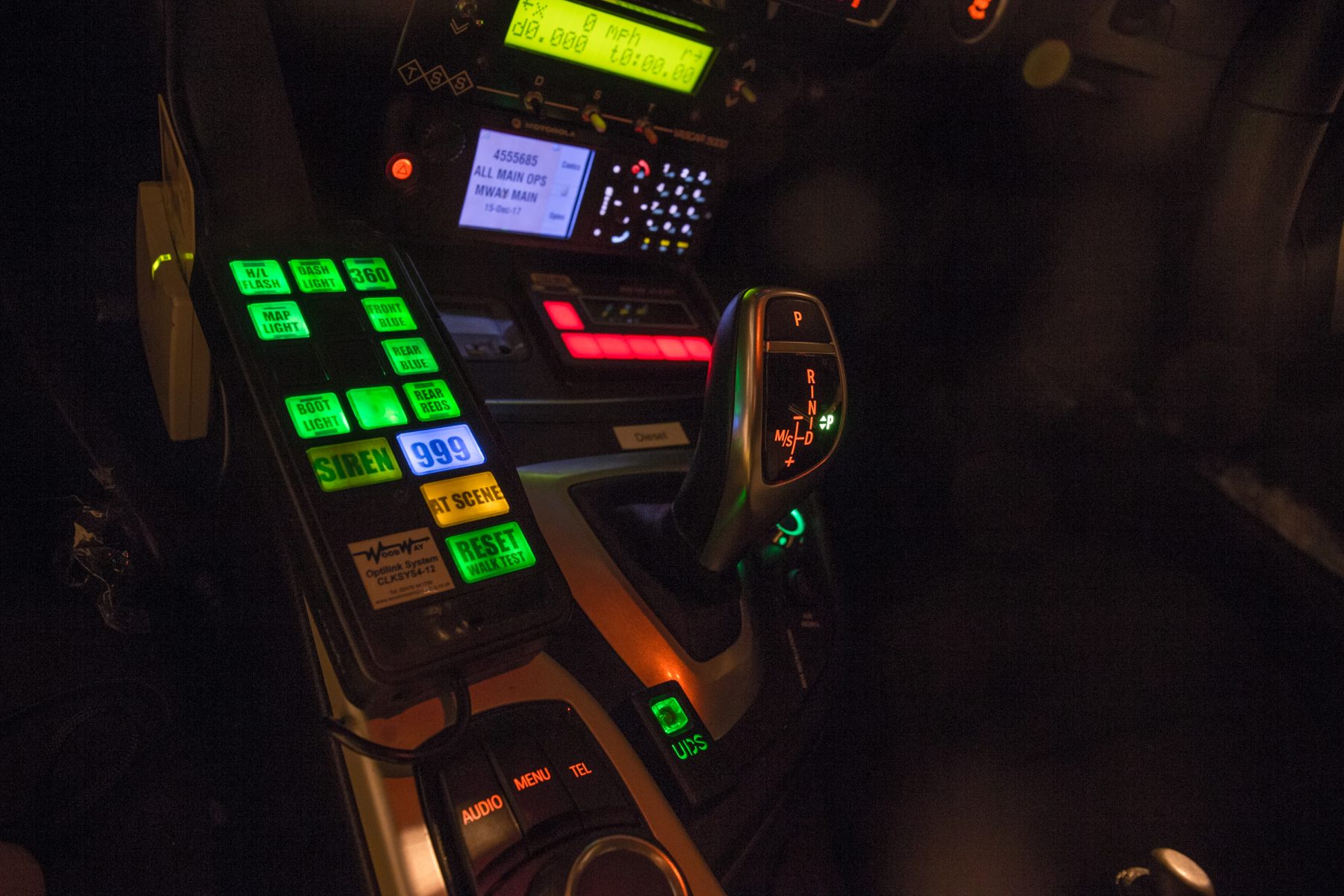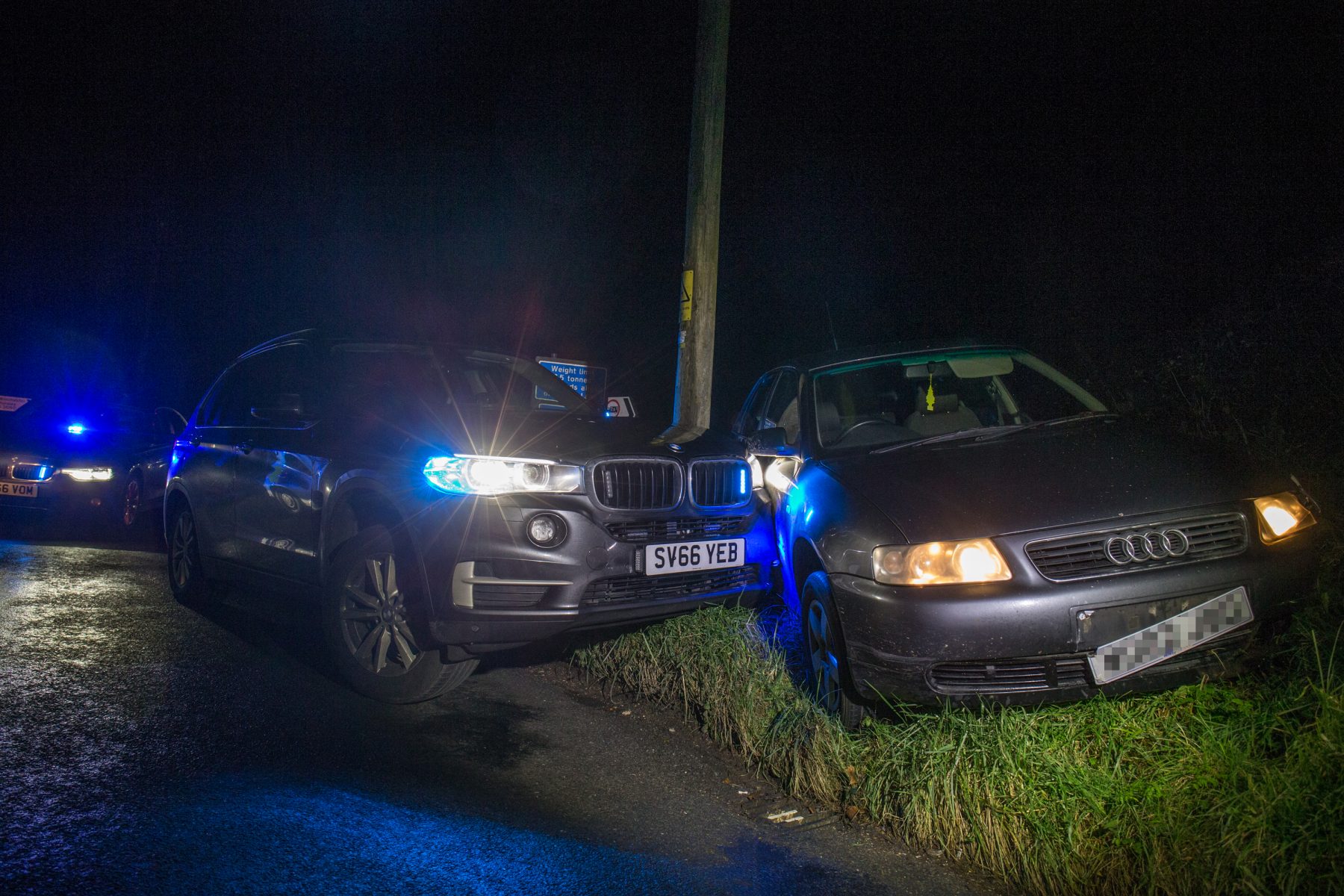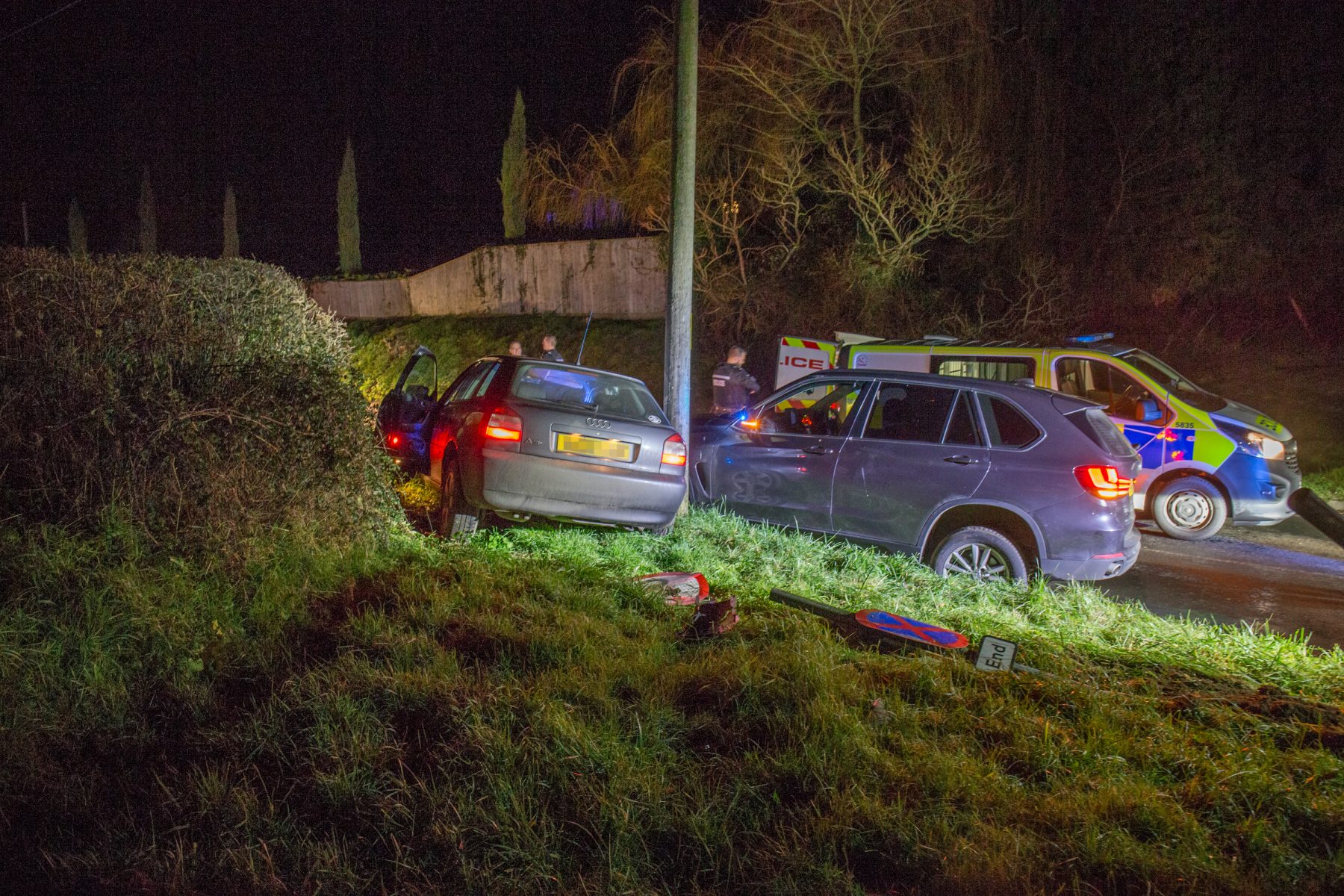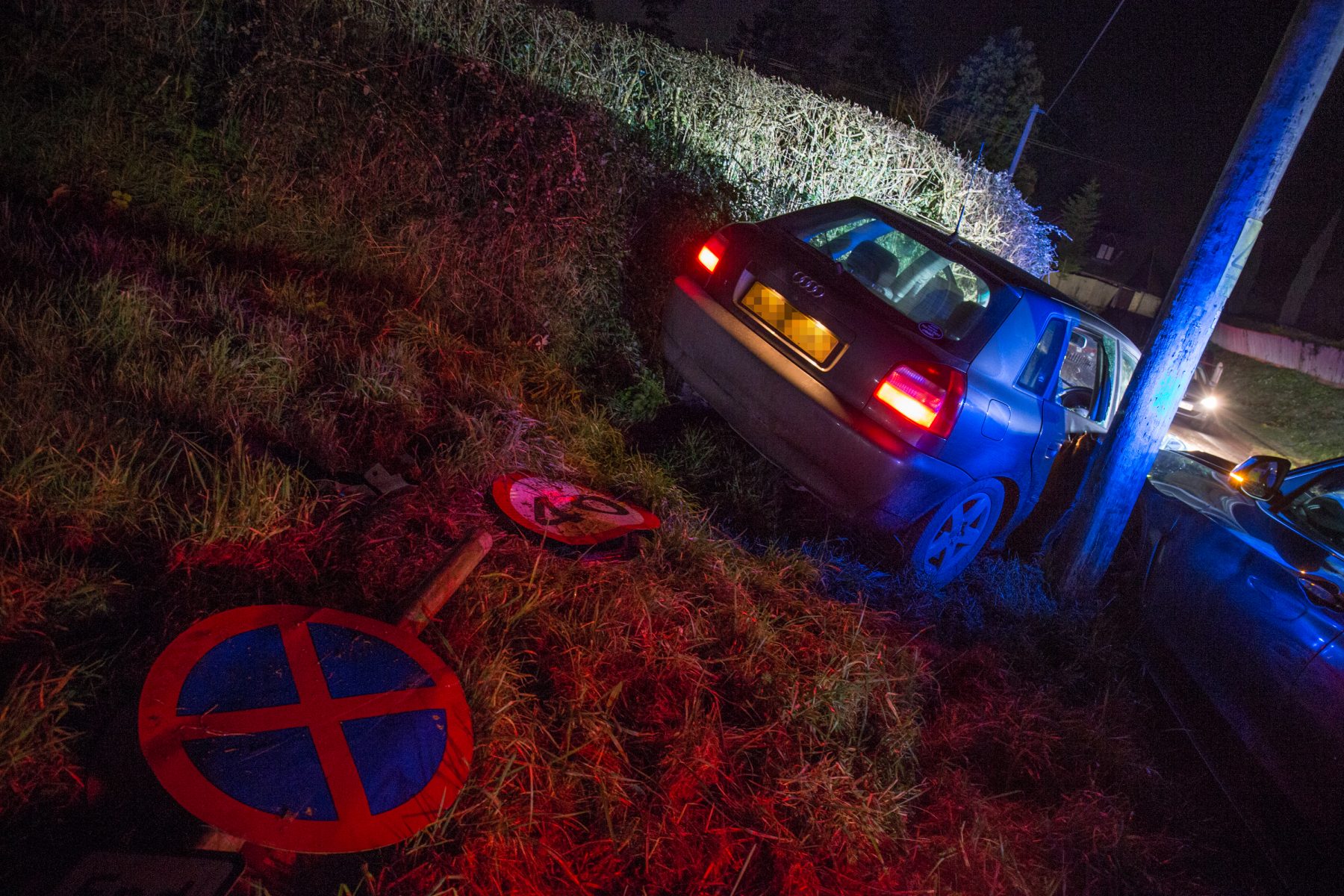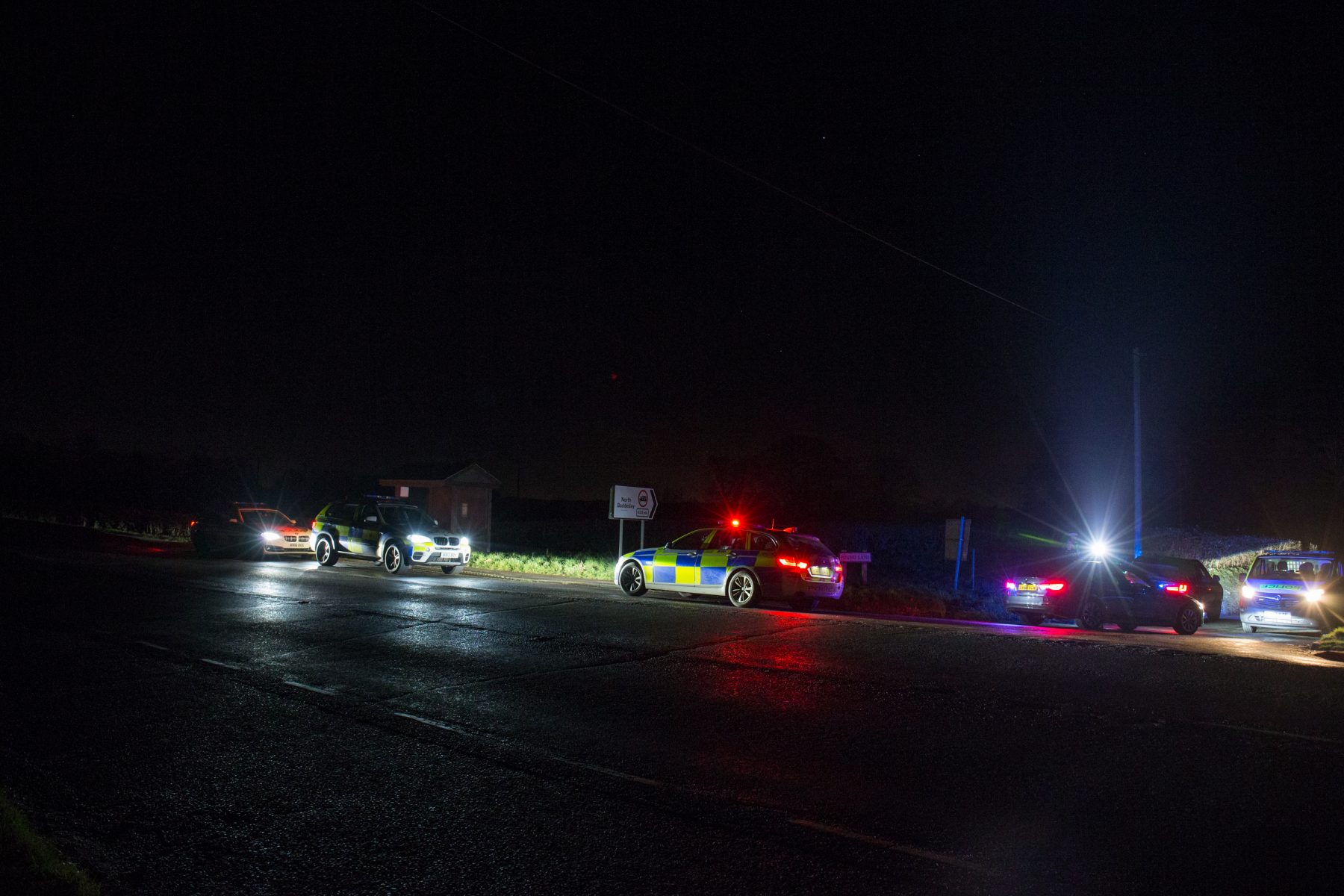Police unmarked cars are getting harder to spot – but they’re not impossible if you know what you’re looking for.
As technology moves on, the days of twin aerials on the roofs and lights cut into the rear bumpers are long gone. But if you know the tell tale signs the unmarked cars can still be identified.
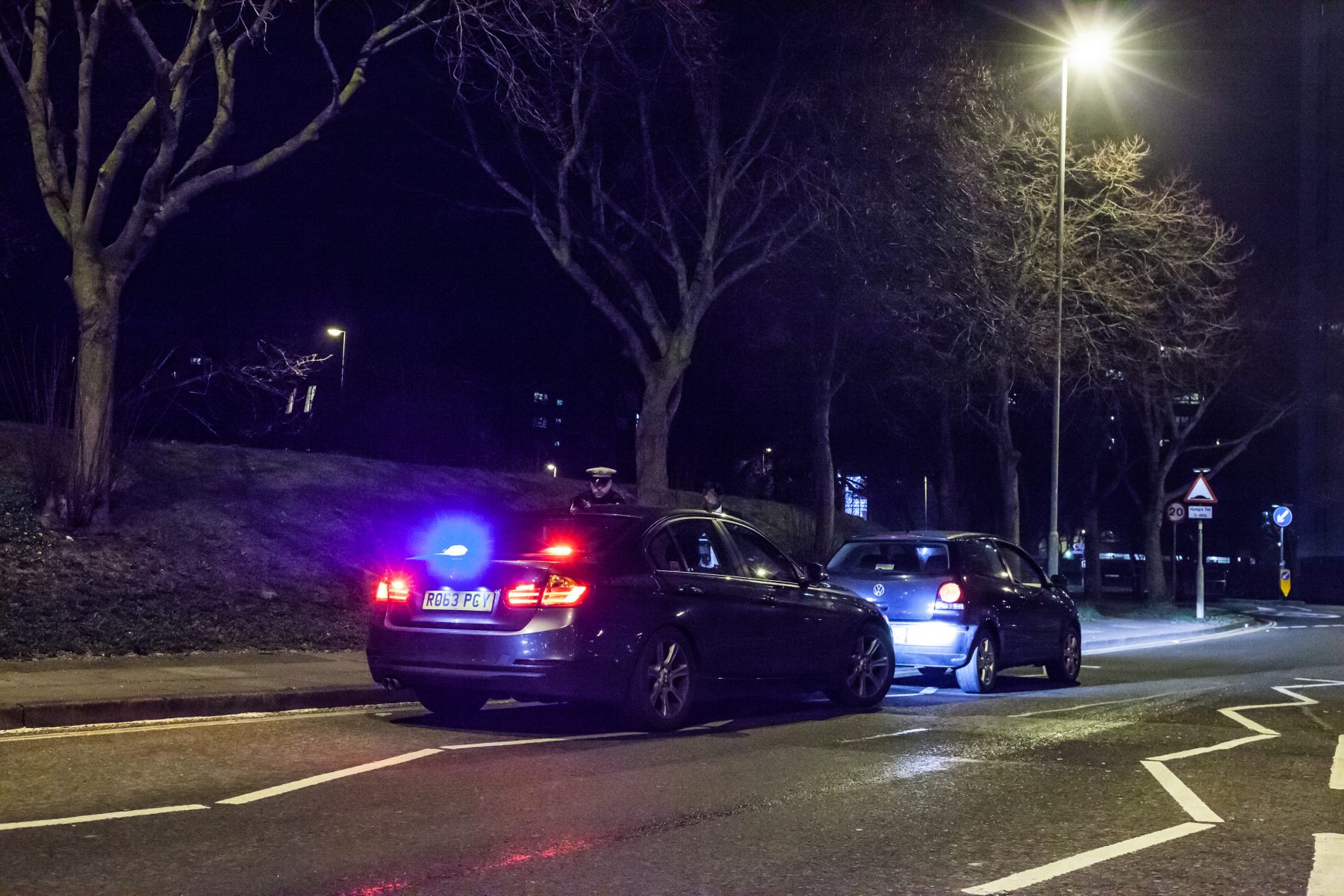
We spent a shift with an unmarked car from the Roads Policing Unit based in Havant, Hampshire with PC Chris Powling to see exactly what they get up to.
Don’t think we’re giving away any of the police force’s secrets here without them knowing, though. They wanted us to write about their unmarked cars – because they want the public to know they have it and use it. Just as forces do up and down the country.

What’s more, if you’re looking out for one, they say, you’ll be driving more cautiously and paying more attention so its job is done by default…
They sit low at the back

Police cars – even the unmarked ones – have to carry a lot of kit including cones, signs and more. This means the unmarked BMW 3 Series sits noticeably lower at the back.
One cop or two?
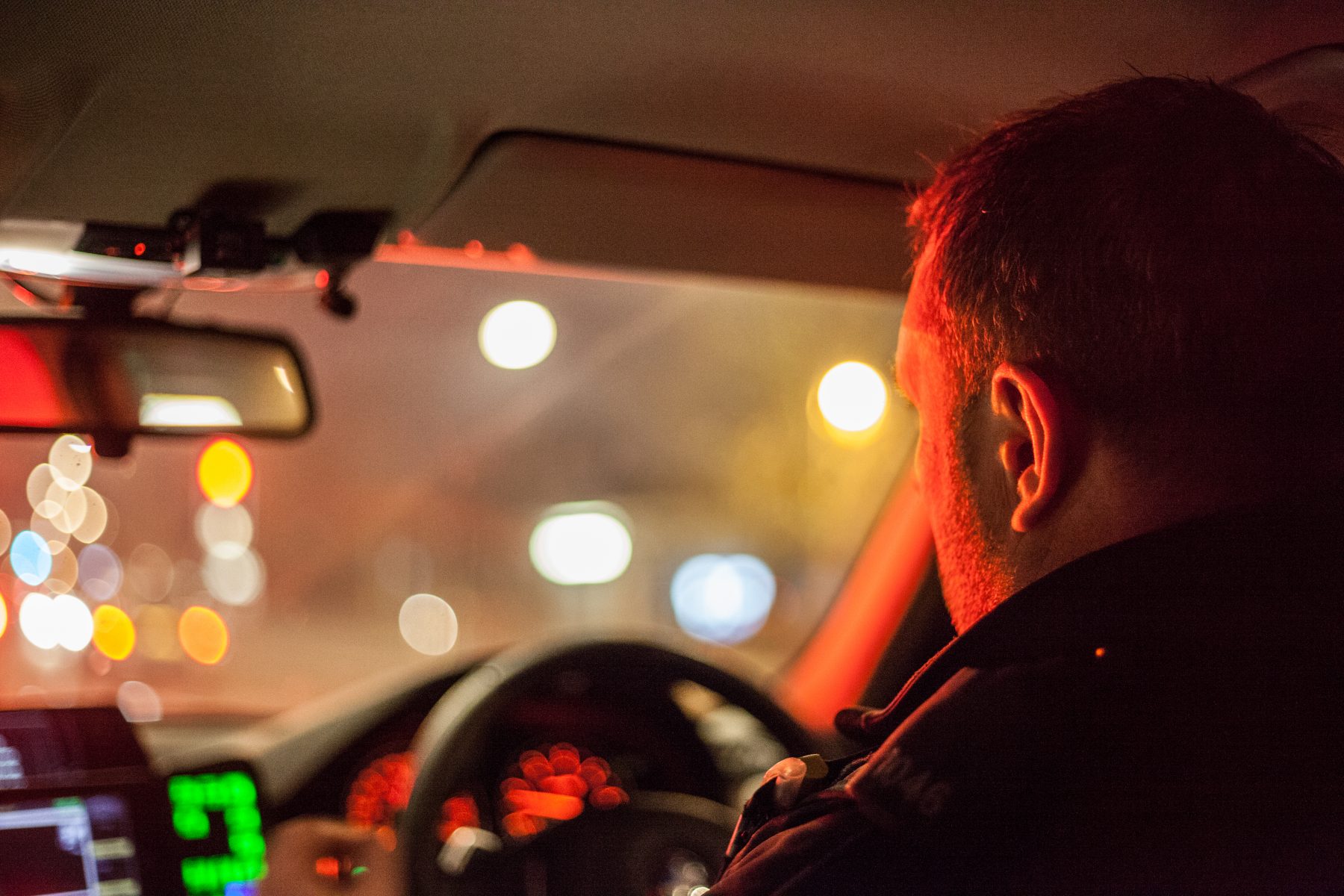
It used to be thought that unmarked police cars had to be manned by two officers – but that’s rarely the case these days. Savage budget cuts have depleted roads policing units and that means you’re more likely to see unmarked – and marked – police cars manned by single officers rather than two.
Make and model

Police forces up and down the country use all manner of different makes and model of unmarked vehicles. We’ve seen unmarked HGVs, motorcycles and more. However, BMW, Skoda (often Octavia VRs), Volvos and even VW Golf Rs are commonly used up and down the country. So looking for a certain type of car is no giveaway.
They have a lot of kit on the dash
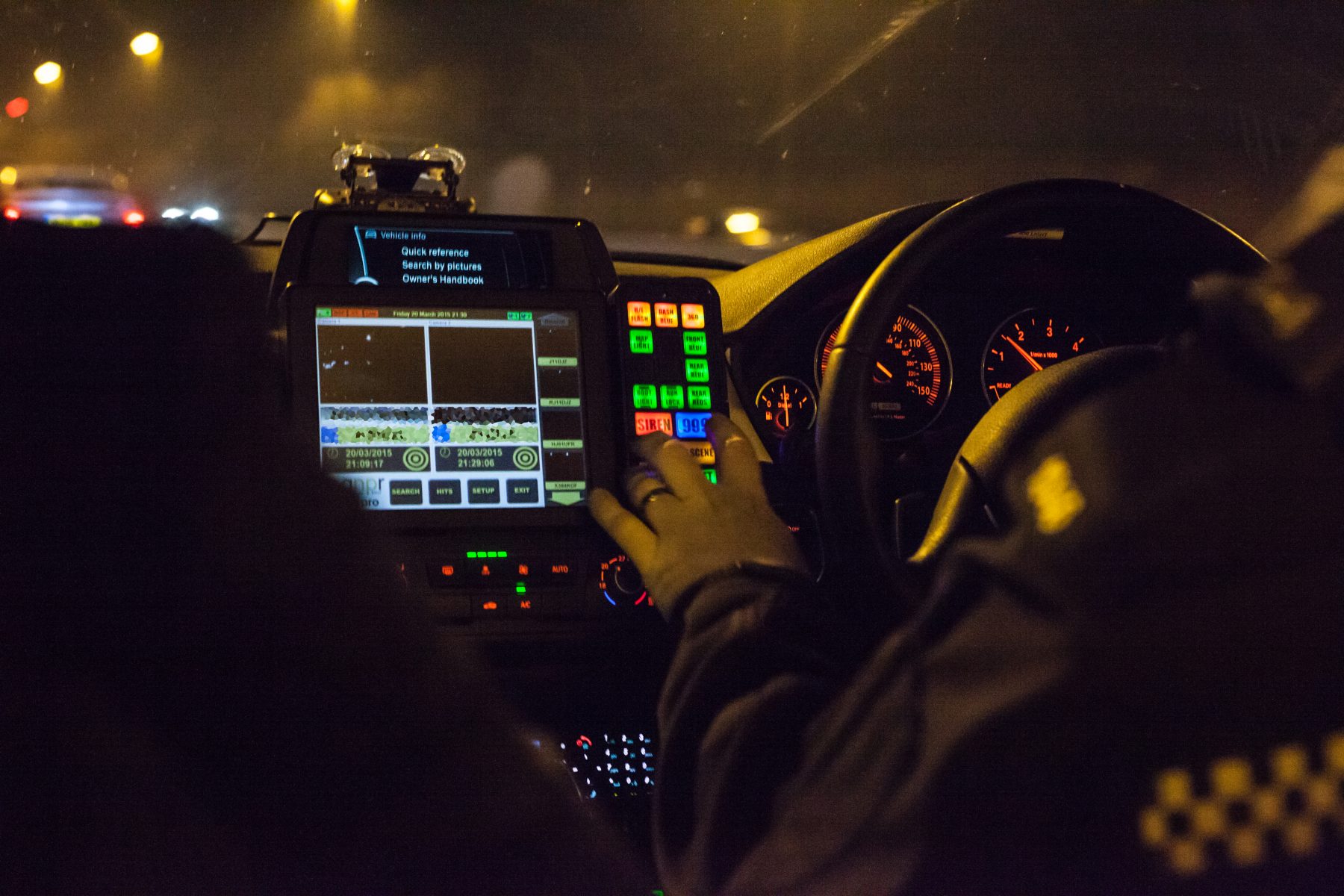
You won’t notice until you pass, but look inside and you’ll spot the large ANPR screen and buttons for the sirens and lights on the dashboard. It’s far more complicated than iDrive, but it’s lit up like a Christmas tree on the dashboard.
They have a camera behind the number plate
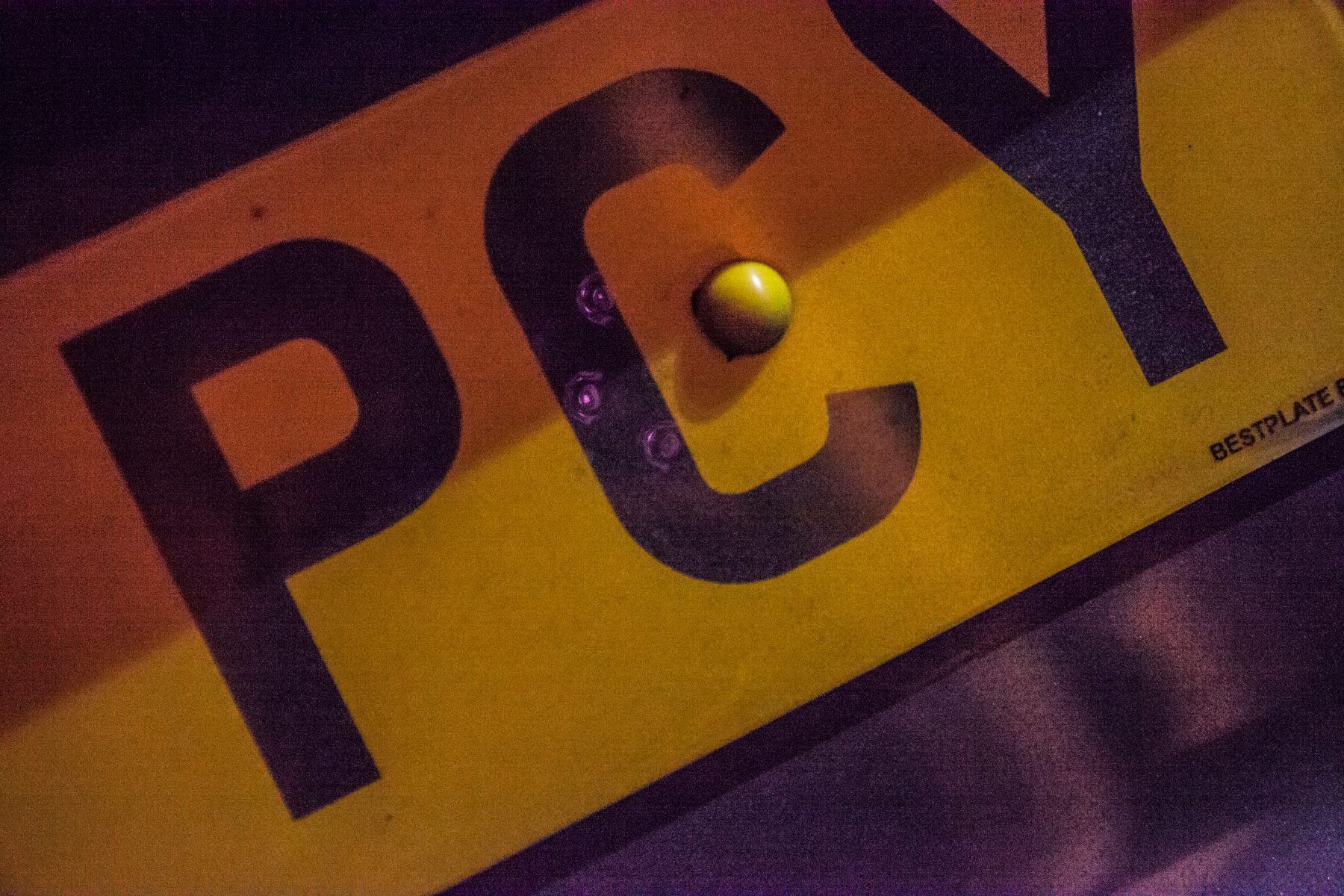
You’d need to have eyes of a hawk to spot it, but the infrared camera now often sits behind the rear number plate. One of the letters on the plate is mirrored so the camera can see through.
However, these have been known to break all too easily, so many forces are reverting back to cutting holes for them in the bumpers or placing them under spoilers. These are especially obvious on Skodas, where the central strut of the spoiler is now a huge box housing the camera.
Lights behind the front number plate

Look closely at the front number plate from the side and you will see it sits further forward and has a strip of LED lights either side. These are so the car can be seen side on. You can just about see them in this picture.
Behind the grille

With more cars than ever before stashing radars for cruise control and anti-collision systems behind their grilles, these two LED light strips could easily be mistaken for something else. But look closely enough and they are there.
Is it driving like a BMW?
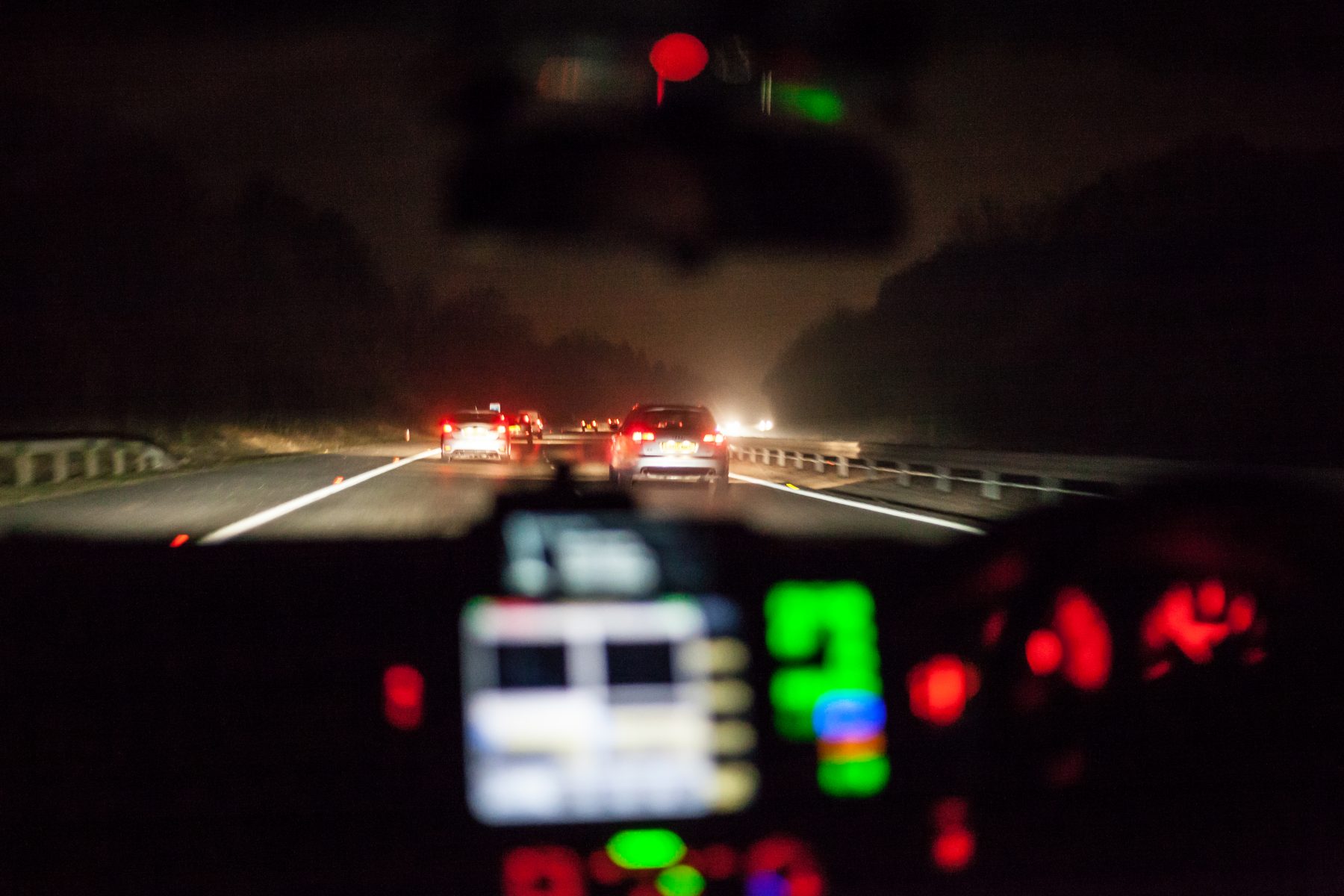
It’s a cliché but BMW drivers have a certain, how shall we put this, “style” about their driving. Police trained drivers do not. Is it in the slow lane? Is he travelling at the speed limit? Is he behaving like a proper driver should?
Parcel shelf gubbins

If your car is high enough to look down on to the parcel shelf you’ll see there are several unusual blocks where the dot matrix board pops up to tell people it’s a police car. but you’d have to be looking very hard to spot them when retracted.
Uniformed officer

The biggest giveaway will be the fact a police officer is sat behind the wheel. Although they won’t be wearing their high visibility jackets they will have epaulettes on their shoulders and the word ‘police’ written on their clothing. it’s hard to spot at night, but not so hard during the day.

